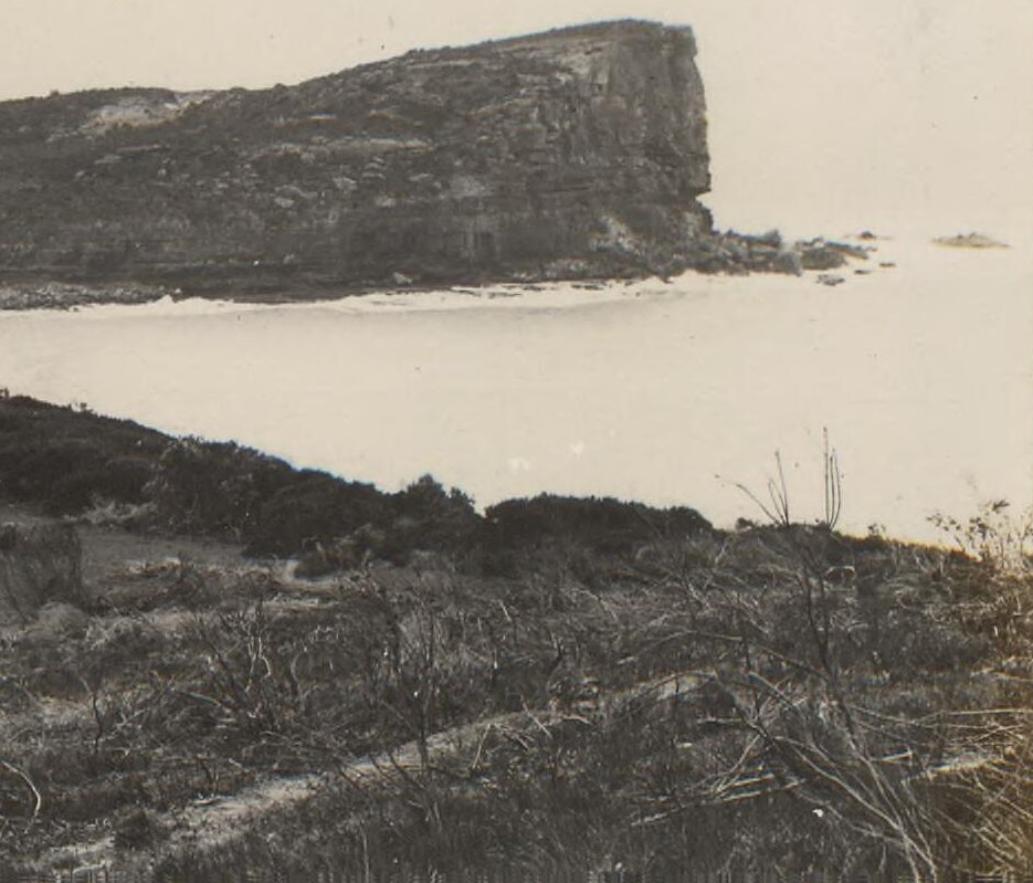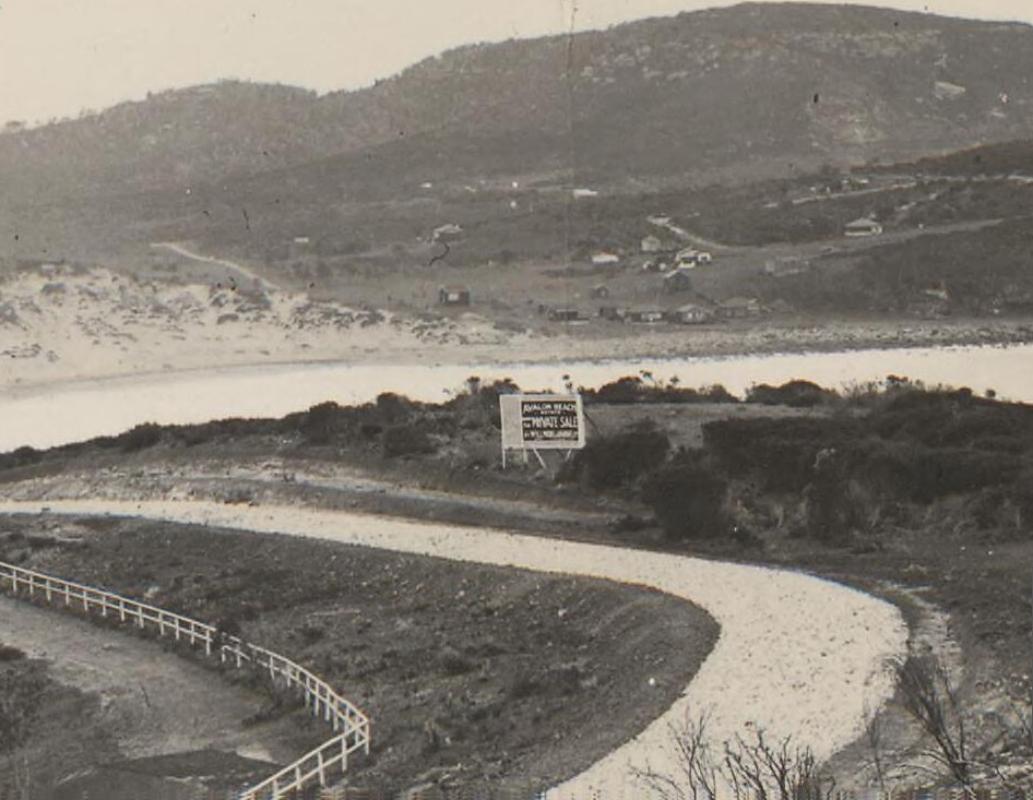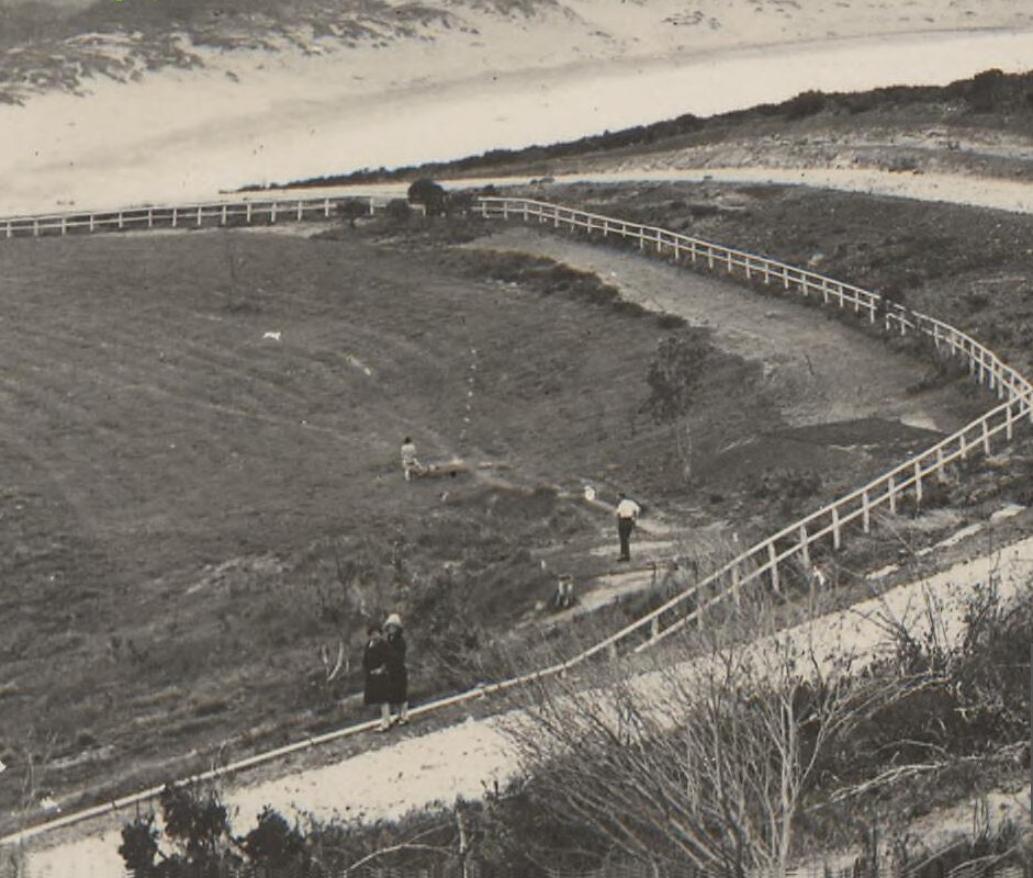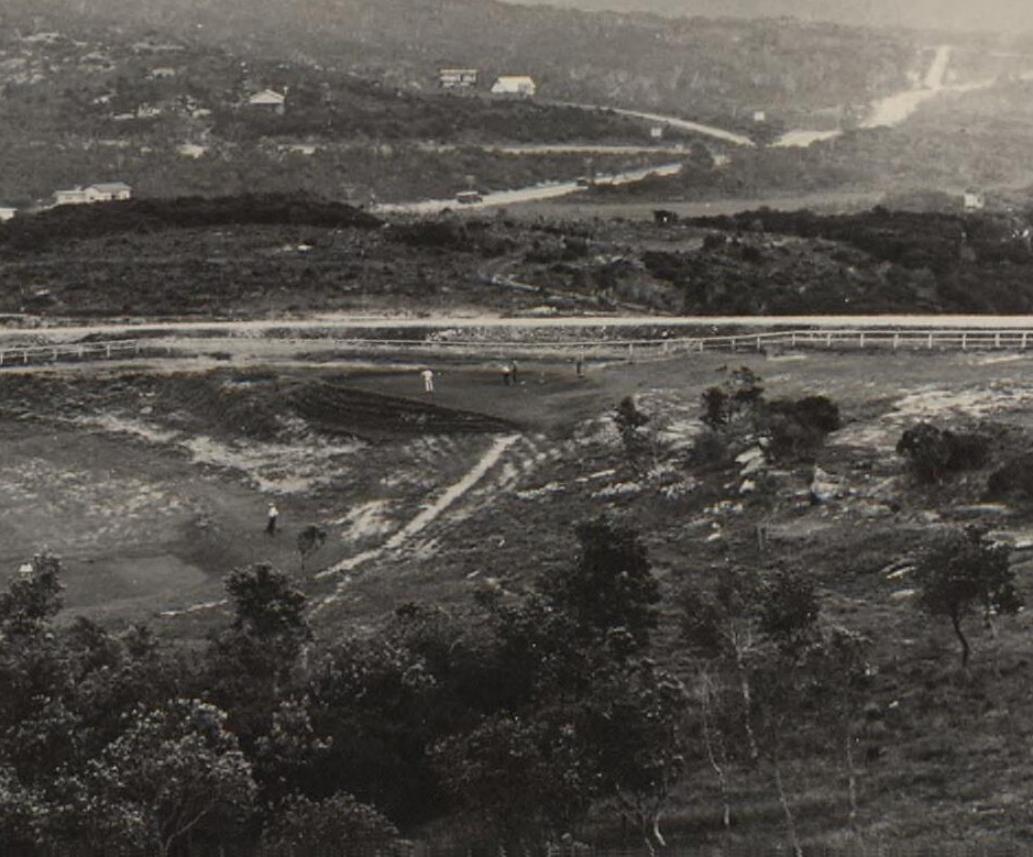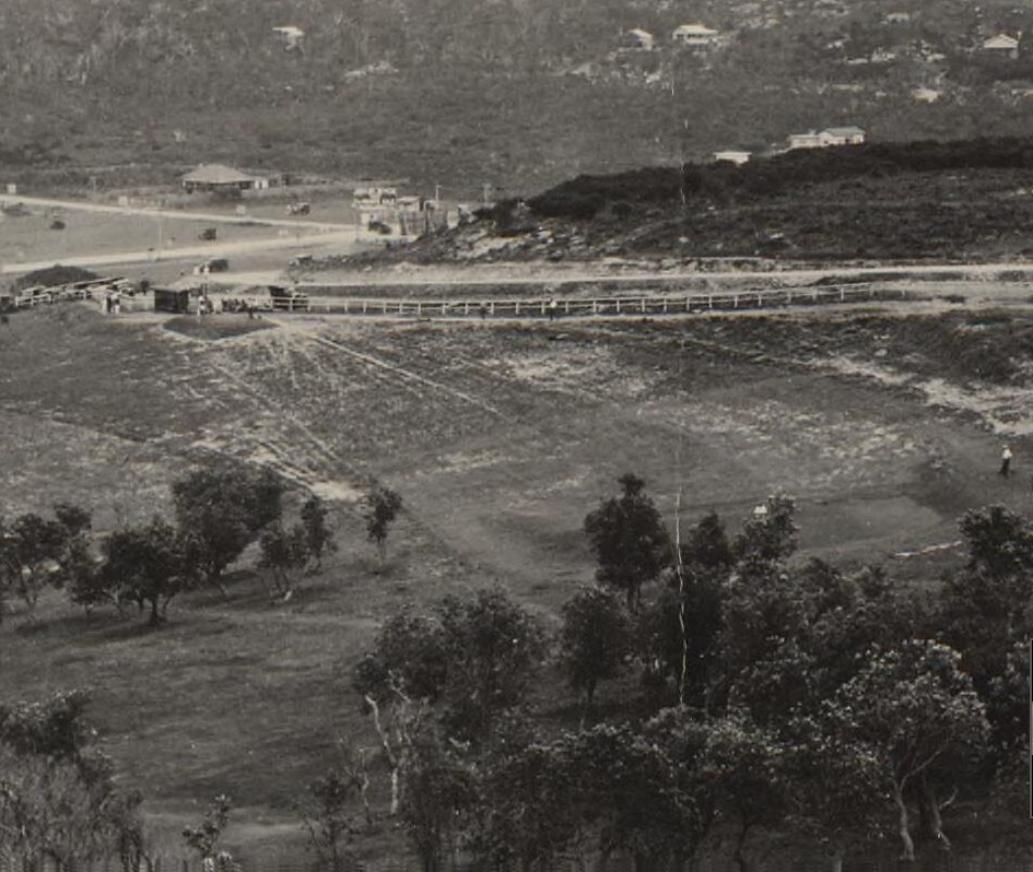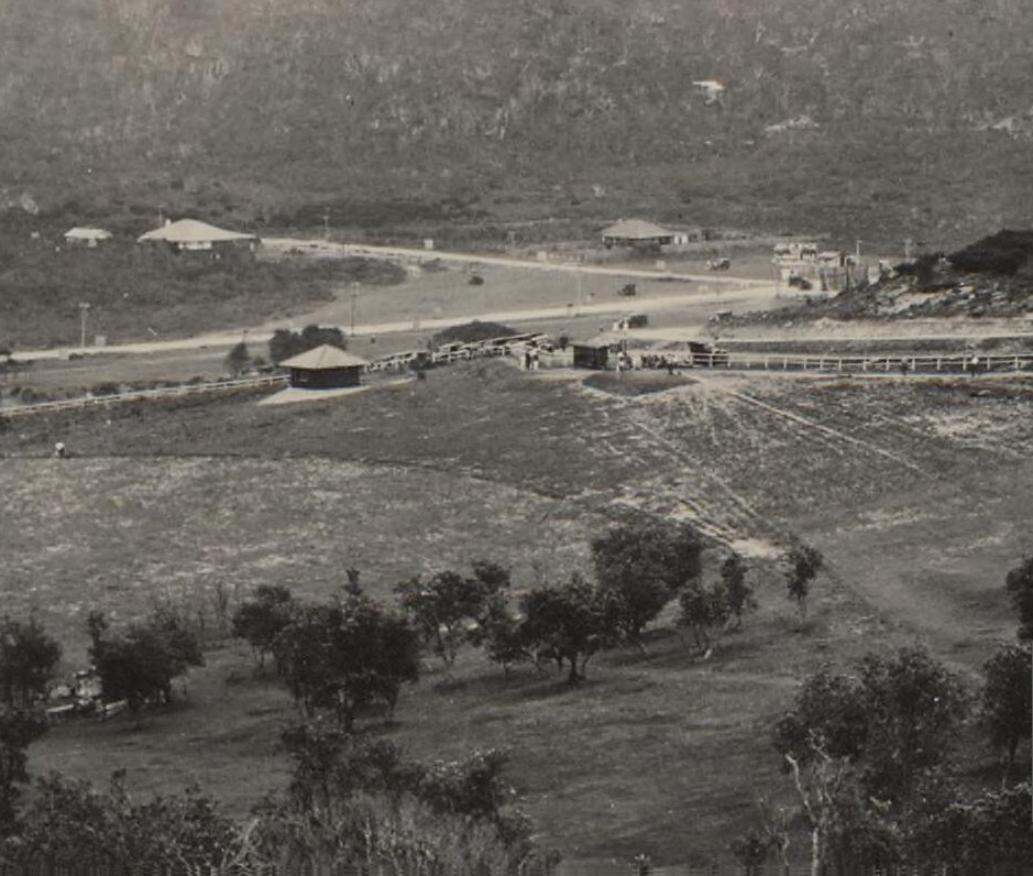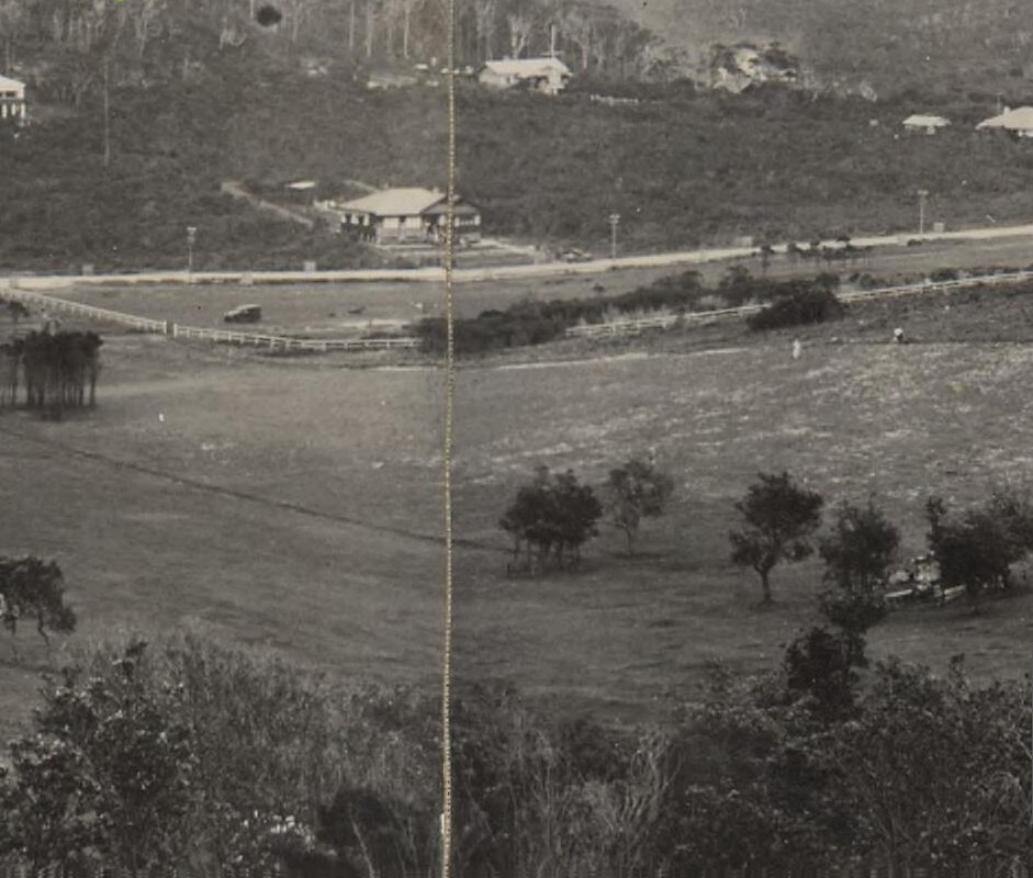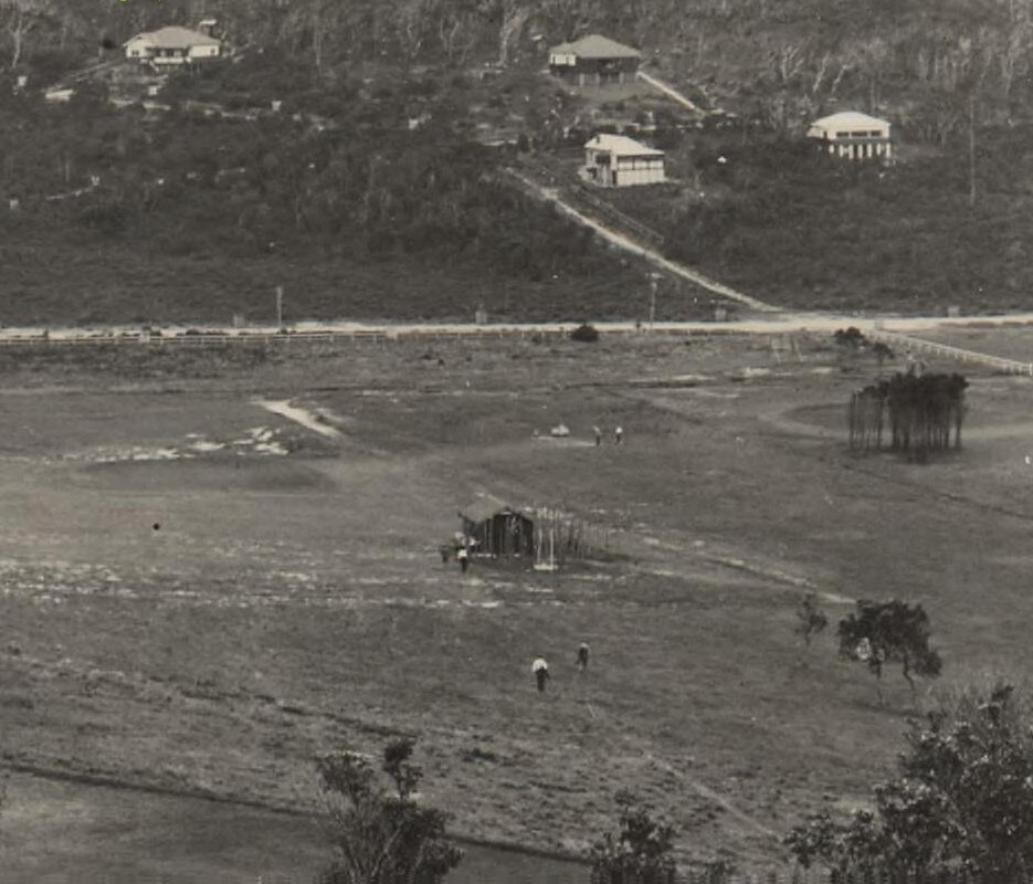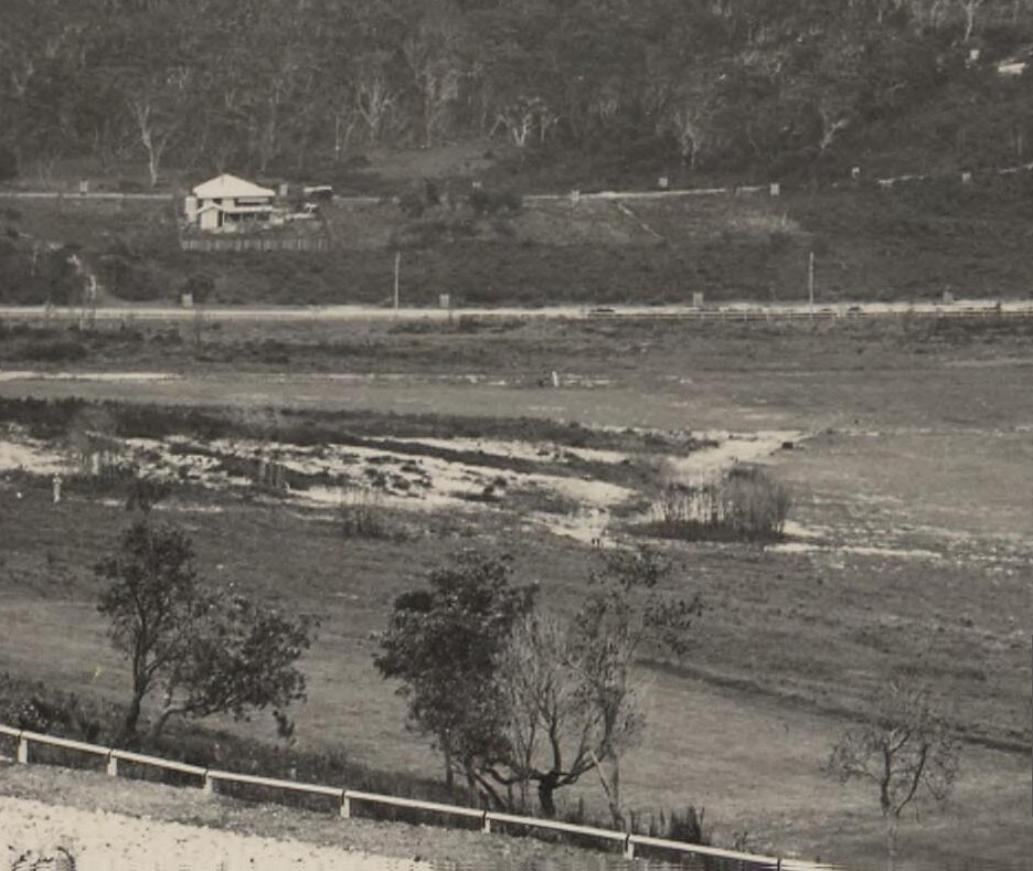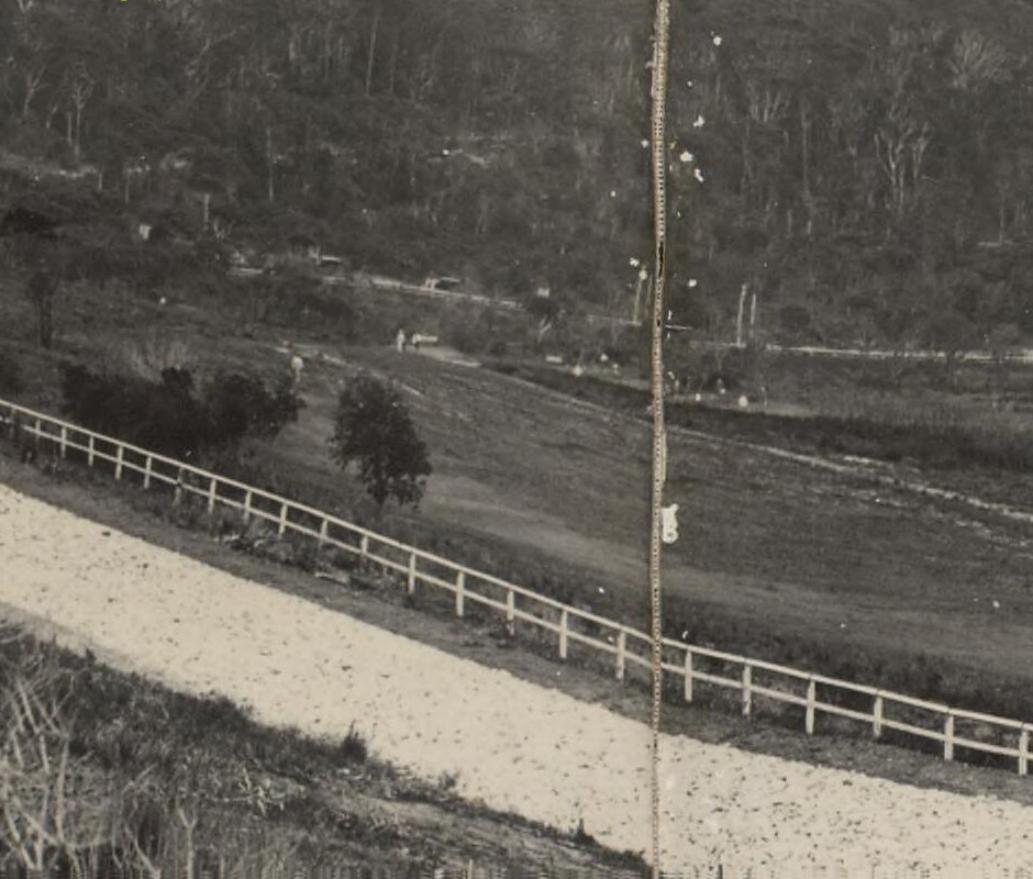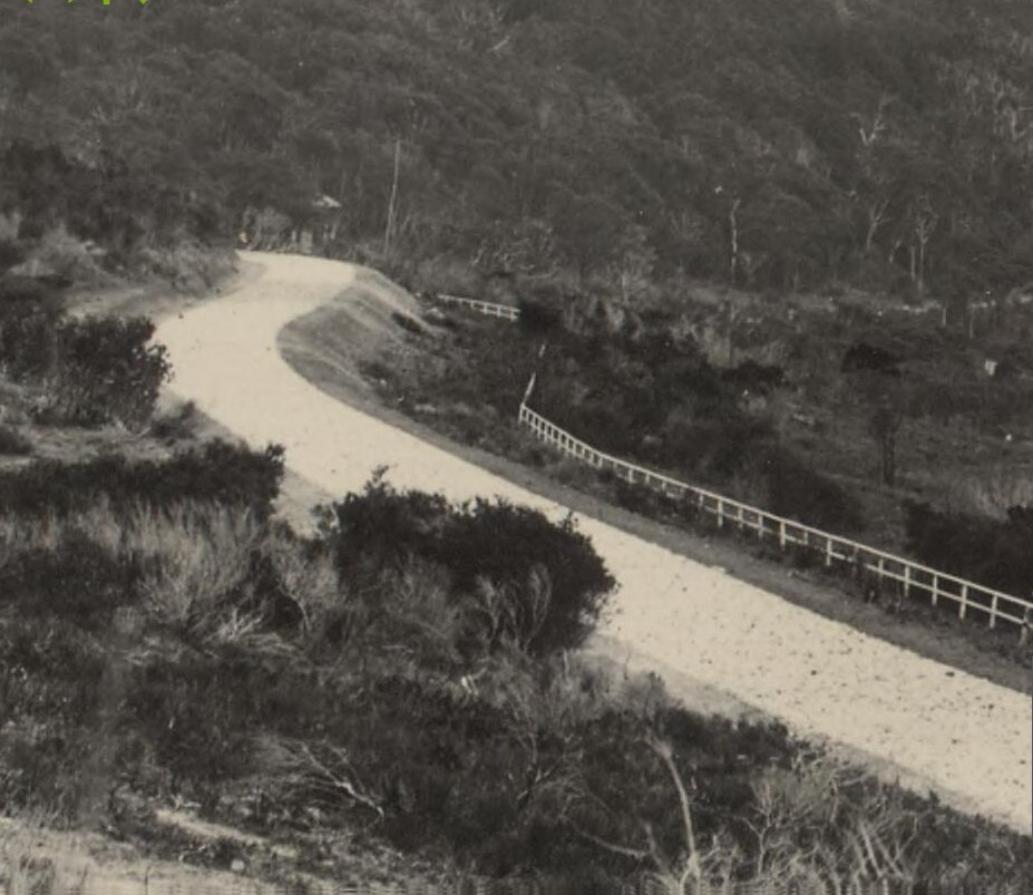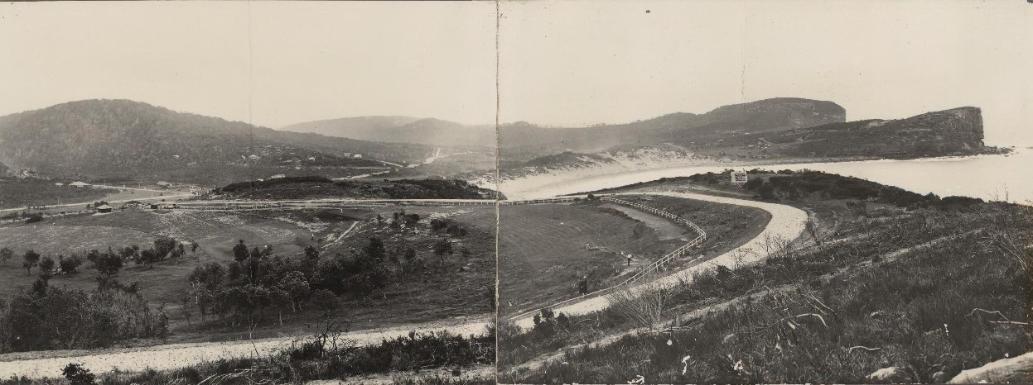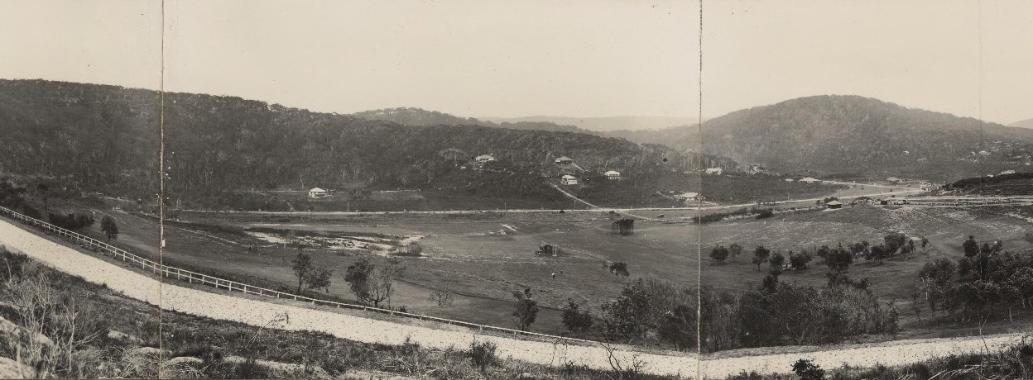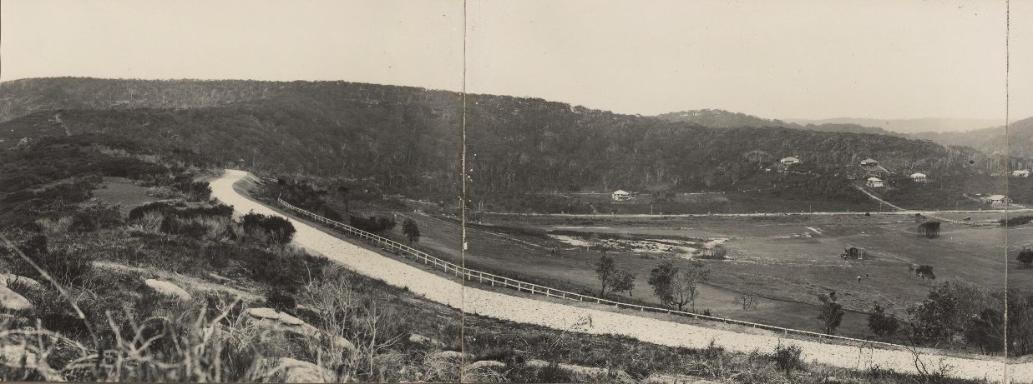Avalon Beach Sand Dunes: Some History


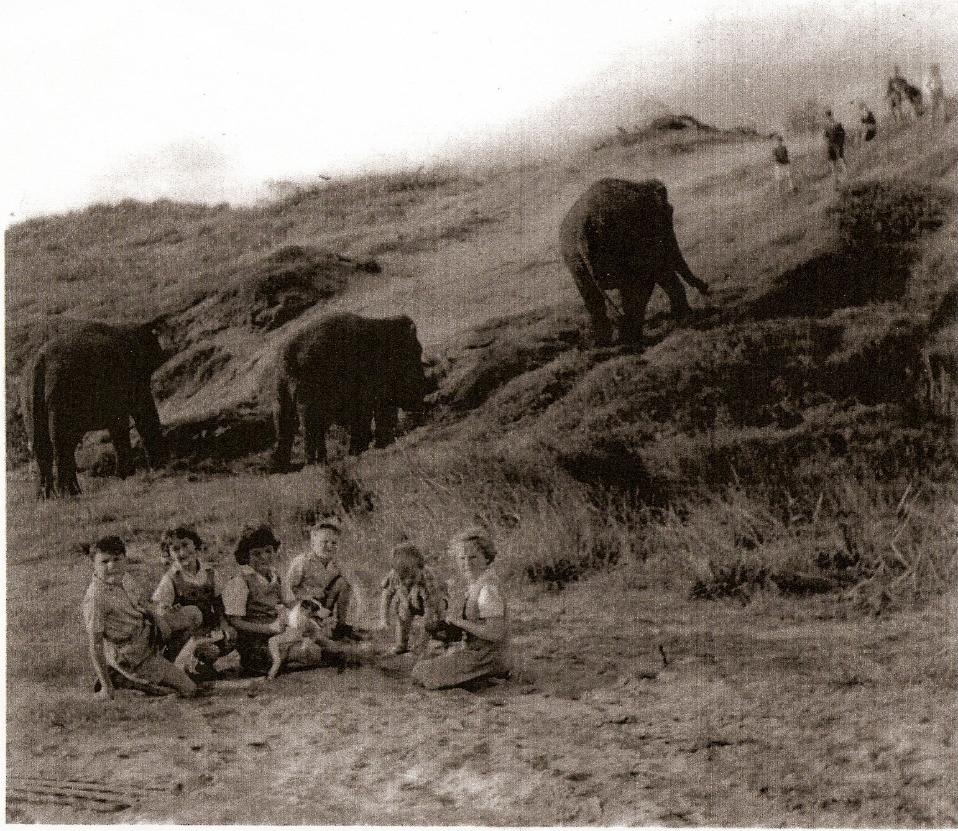
Circus comes to Avalon. Elephants graze in the dunes in the 1960s. Poor dunes! No wonder the sand began to blow. Photo: ABHS
RAMBLER NOTEBOOK -
HAPPY HOLIDAY
The other day the family and I came back from a very enjoyable holiday at Avalon Beach. Fishing and surfing took up most of the time but one red-letter night, a circus pitched its tent not very far from where we were staying. Trained elephants, horses, dogs, lions, and monkeys were all included in the entertainment, as well as clowns, acrobats, trapeze artists and tightrope walkers. One horse played football and kicked a ball with his hind legs into the audience. Another day a couple of friends and I went fishing at Pittwater for the day. Some bream and a couple of leather-jackets were all we caught. (Blue Certificate to Bruce Salmon (12), 66 Findlay-avenue, Roseville.) RAMBLER'S NOTEBOOK & HOBBIES (1942, March 1). The Sun (Sydney, NSW : 1910 - 1954), p. 7 (SUPPLEMENT TO THE SUNDAY SUN COMICS). Retrieved from http://nla.gov.au/nla.news-article231759658
A coastal sand dune is comprised of seven basic elements; the nearshore zone, surf zone, swash zone, berm, incipient dune, foredune and hind dunes. The berm, incipient dune, foredune and hind dunes are the on land visible parts.
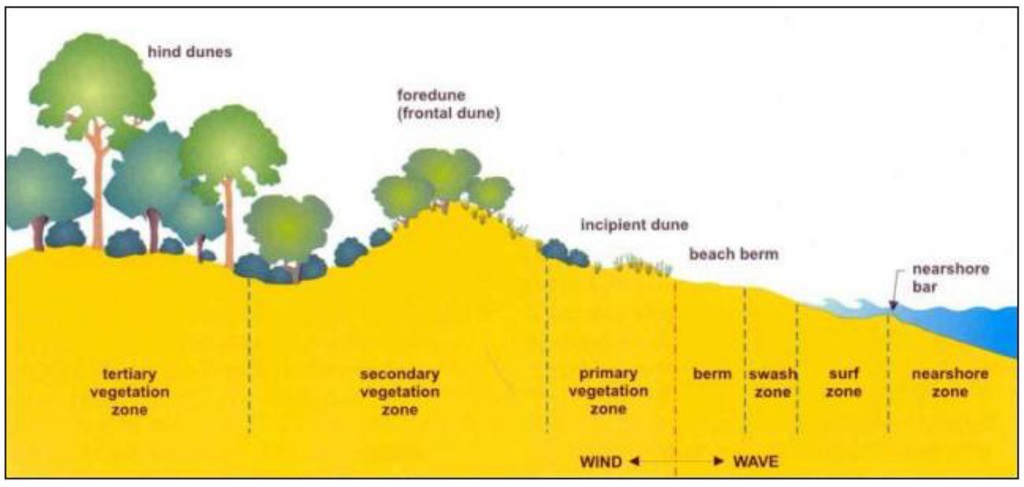
The valley of Avalon, once it began to be cleared by early European settlers, was used primarily for running stock, including cattle to produce milk, cream and butter. These all grazed along the flat areas as well as in and among the edges of the dunes.
Early photographs show the extensive range and height of the dunes, as well as the vegetation which covered these.

.jpg?timestamp=1619638893104)
.jpg?timestamp=1619638936650)
.jpg?timestamp=1619639586518)
.jpg?timestamp=1619639622351)
EB Studios (Sydney, N.S.W.). (1925). Panorama of Avalon Beach, New South Wales, ca. 1920-25 Retrieved from http://nla.gov.au/nla.obj-162503612 - and enlarged sections from to show details
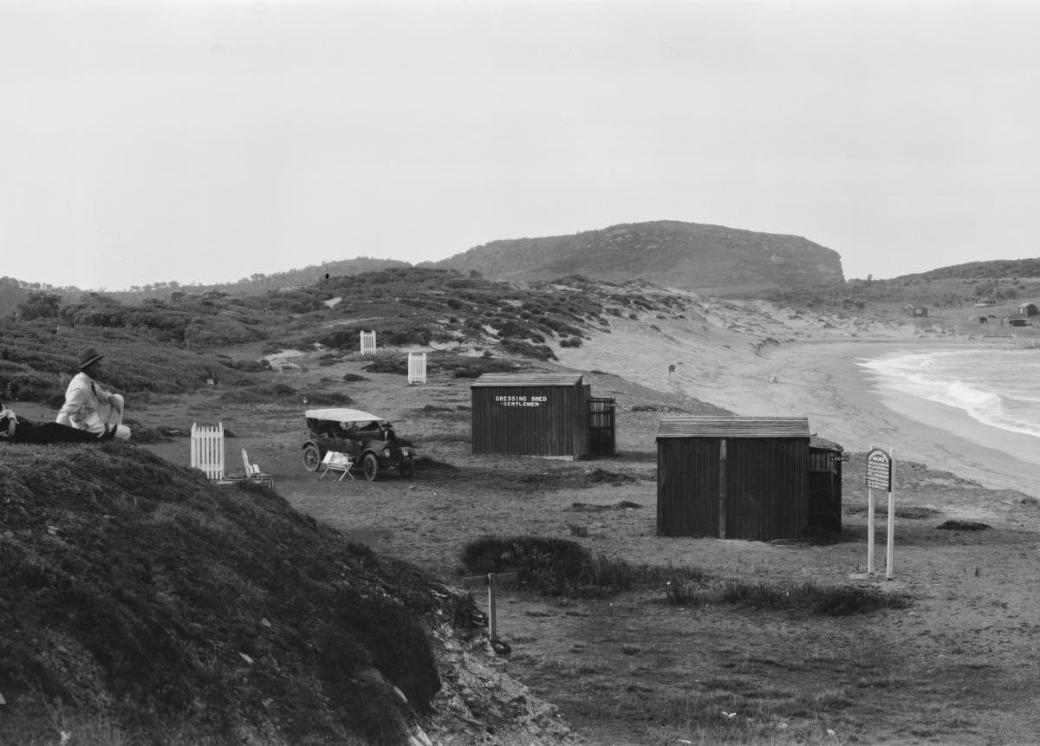
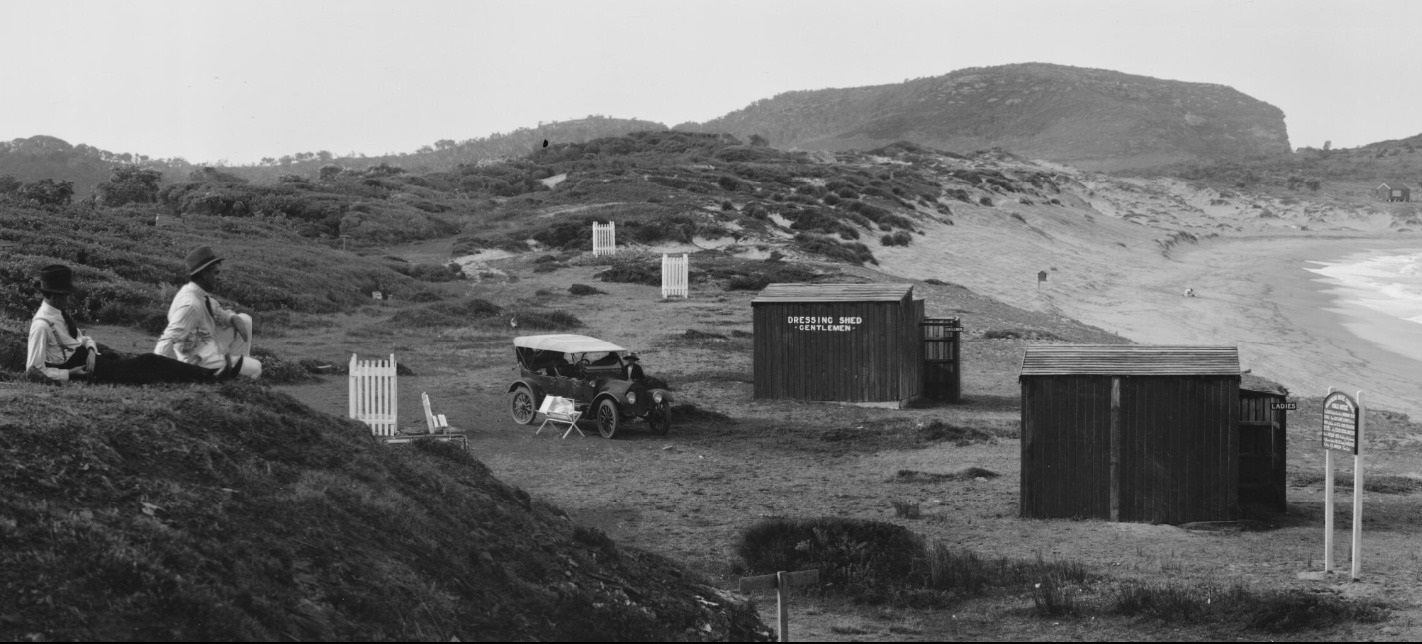
.jpg?timestamp=1675634298072)
.jpg?timestamp=1675634326944)
.jpg?timestamp=1675634351632)
'Panorama of beachgoers at Avalon Beach', New South Wales, ca. 1925 section enlarged to show dressing sheds on Avalon Beach at this point in time. The beginnings of Norfolk Pines, planted by A J Small are in the white wicker tree guards. Image No.: nla.pic-vn6217968 by EB Studios, part of the Enemark collection of panoramic photographs, courtesy National Library of Australia Retrieved from http://nla.gov.au/nla.obj-162503014
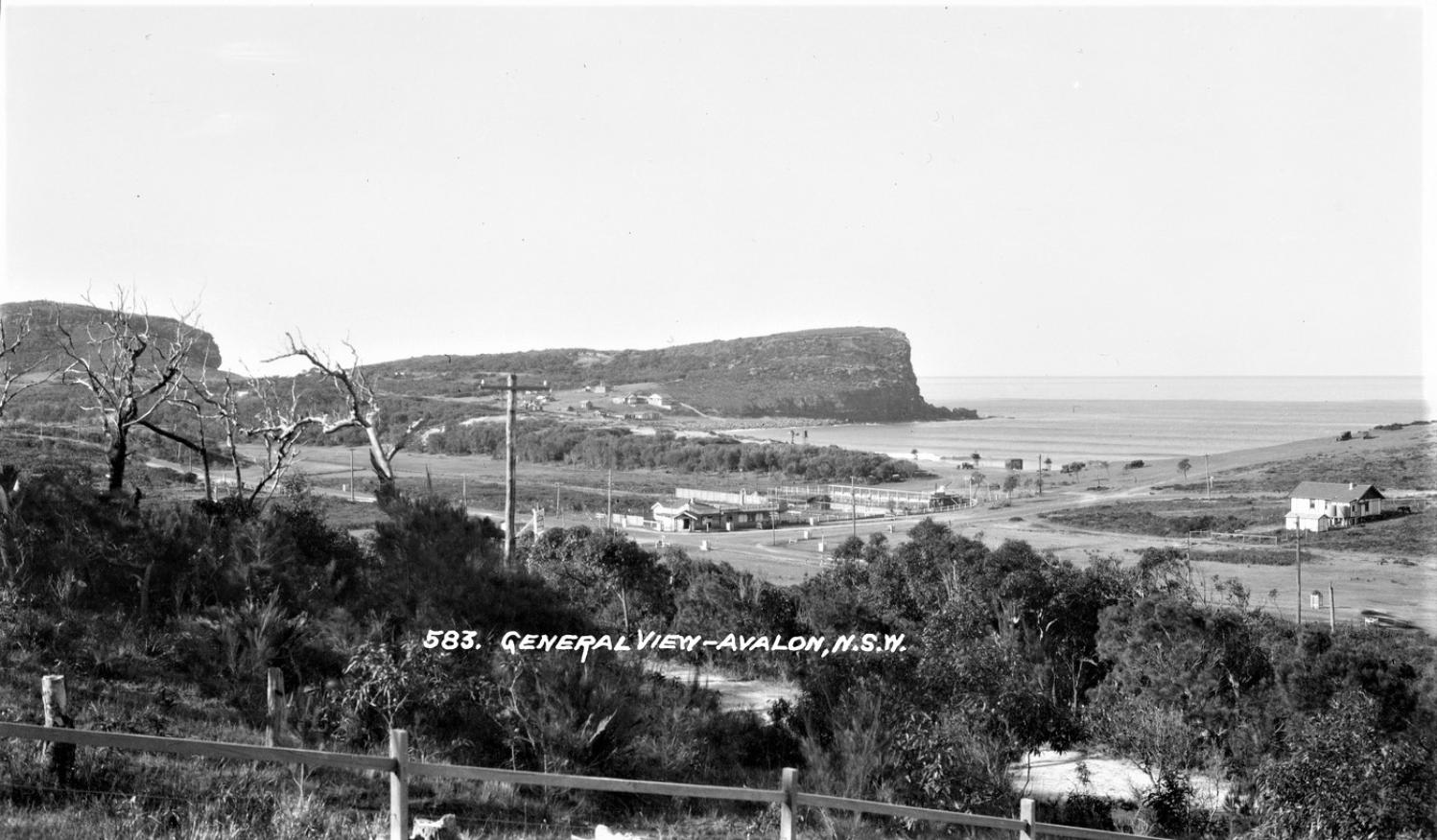
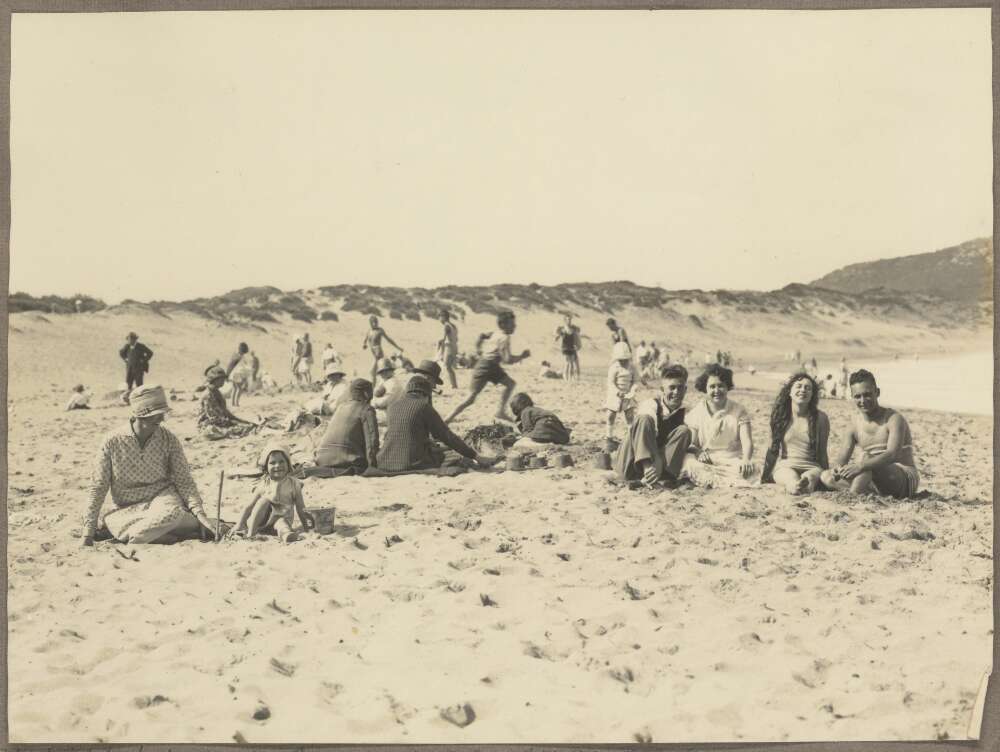

An article penned in 1923 by Niya Becke, youngest daughter of Louis Becke and sister of Palm Beach surfer Alrema Becke, describes the area as:
A COASTAL DRIVE
Vale of Avalon
BAYS OF BLUE AND GOLD
(By NIYA BECKE.)
Entering the scrub-fringed French's Forest Road, our purring car swung through open, softly, undulating spaces, giving way in the distance to mist softened glimpses of low-lying, plum-purple mountains. Under a clear horizon of pale turquoise, it wended past tended orchards, where apple and peach trees blossomed, pink and white, to, the ardor of the southern sun, against a mellow glow of light green camphor laurels, shadowed with sombre sorrel-and-grey gums. We met with partly-cleared, grass-grown dingles, spangled with shimmering lakes of sunlight, and gemmed with clear, calm pools. We passed down a leafy vale, lovely as a country lane of Old England (only the white and delicate purple violets, wild roses, and primroses were not there), on to a terra-cotta colored highway, between ' smiling fields, richly carpeted in spring green, where calves, brown, black, and piebald lay dreamily, basking in the warmth of the sun-flooded clay. A straight run down a long grey hill, over a stretch of ochre red road, and then, suddenly, afar.. came a flash of intense color, a blazing streak of blue fire. Sensing the promise of the beauty of the sea, we sped onward to the coast.
Over the bridge at Narrabeen. where a solitary pelican paddled placidly, above mysterious, muddy depths, by fields, and more fields, and by cottage colonies clustered in bowl-round hollows, and emerald-covered clearings. On to the blue bay, where stands the travellers' inn of La Corniche with its curiously modelled Interior arches, like those of some prince's pictured palace in a fable of the East. Up a gentle Incline, and we were abreast the little brown-castle of Bungan Head, perched on the extreme edge of the cliff, facing the Peri-guarded gates of dawn, and the everlasting sea.
THE BLUE, BLUE WATERS.
From this point the outlook south towards Manly, and northward to Barrenjoey, revealed, a chain of blue bays, some evenly scalloped, others jagged-edged, broken in one place by a ledge of indigo and reddish-brown rocks jutting in a foam-silvered peninsula, through ultramarine waters. Blue bay after blue bay, and curving beach upon curving beach of fine yellow or coarse red-gold sun-dappled sand, and grass-tufted, wind-ridged dunes. Here cerise-clawed. seabirds paddled .through lambent amber and almond green ripples on the ocean brink. They pressed wave-powdered shells in intricate, marquetry into the shining strand, which the rising tide .would laughingly sweep away to pave 'hidden' paths, deep down in measureless' marine gardens, where Leviathan looms with swordfish and shark, above rotting Chinese junks, a nu sunken galleons from sun-kissed Spain.
We climbed another whale backed hillock by Bungan Castle, which called to mind, so weird, and- cloud-Wrapped, and remote it was, Keats's line —
. . magic casements, opening on the foam .
Of perilous seas, in faery lands forlorn."
For from here there is a gorgeously fantastic view of violet-and-green veined waters, flecked with stars of flame fallen from the crimson coronal of the Sringod of the South. Those who listen intently may hear by these charmed shores, sou-sylphs singing those ballads, sailor men love. On we went again, down a steep declivity to beautiful Bilgola, whose rustling palm grove whispers of Arabs, and camels, and the music of the desert wind at dawn! over the mount at the northern end of the beach, which bears a bright green crest of fresh glass, pendant, in a still cascade, over the cliff-edge, and glistening purple-blue rocks below. We stopped here a moment, and looked on the' sparkling Pacific unrolled in a mighty plain of that inimitable shade to which- may be likened only the radiant tints of the skies, whence it purloins its magic hue. And we pondered on the glory of a golden springtime day,.
"By- the long wash of Australasian shores."
Onward, once more, and then, behold!
The Vale of Avalon!
"LOVELY AND LONELY."
The land rises and shelters this gracious valley on the seaward frontage, from the strength of the wind, and it is scrub-surrounded, and denizened by happy-hearted birds. Wild flowers hide amid the guardian hills of the lonely, lovely Vale of Avalon. Further afield we followed the twisted road, where the valley winds gently down. Rich, kingfisher blue flashes of water glowed to the left, through closely-spaced gums, like a liquid opal bursting the brown husk of the land. A strip of bracken-grown wayside lay parallel with a fair beach of fine, white sand, where upturned fisher-boats offered rounded cheeks to the fires of the sun. The sea, outward from the shoreline, toned from a transparent sheet of opalescent jade, to azure, and sunlit, lapis lazuli. Round a sharp curve to the right, up one hill and down another, under, a canopy of leaves, and Palm Beach was reached, and the end of the road.
We rested awhile on the grass-fringed shore, and watched the great waves swell, and break in a splendor of foam, and ride landward.
To Palm Beach, following the coast, is a bewitching highway to traverse. There stands no angel with a flaming sword before this Eden under southern skies.
A COASTAL DRIVE (1923, October 2). The Daily Telegraph (Sydney, NSW : 1883 - 1930), p. 4. Retrieved from http://nla.gov.au/nla.news-article245994803
Avalon Beach's valley had a number of dairies at the north end, towards Careel Bay, from the mid 1840's and into the 1940's. This letter from A J Small, considered the 'father of Avalon Beach' points out what they may have been eating, aside from provided hay:
Avalon Beach Camping Grounds
AVALON.
Pearling waves that cream milk-white,
Sun-drenched sands and skies of blue
Linger in my memory -
Avalon, my heart's with you!
DOROTHEA DOWLING.
AVALON. (1935, May 4). The Sydney Morning Herald (NSW : 1842 - 1954), p. 11. Retrieved from http://nla.gov.au/nla.news-article17151649
Throughout the 1920's and into the 1930's a popular holiday or weekend away was the 'motoring camping holiday', where people, as can be seen below, would install makeshift shades and canvases over their vehicles. As the Depression deepened and people were evicted from their homes a tent and a place to fish to feed their families became popular and more and more people became permanent residents of these seaside camping areas.
LE "MOTOR CAMPING OUT.'
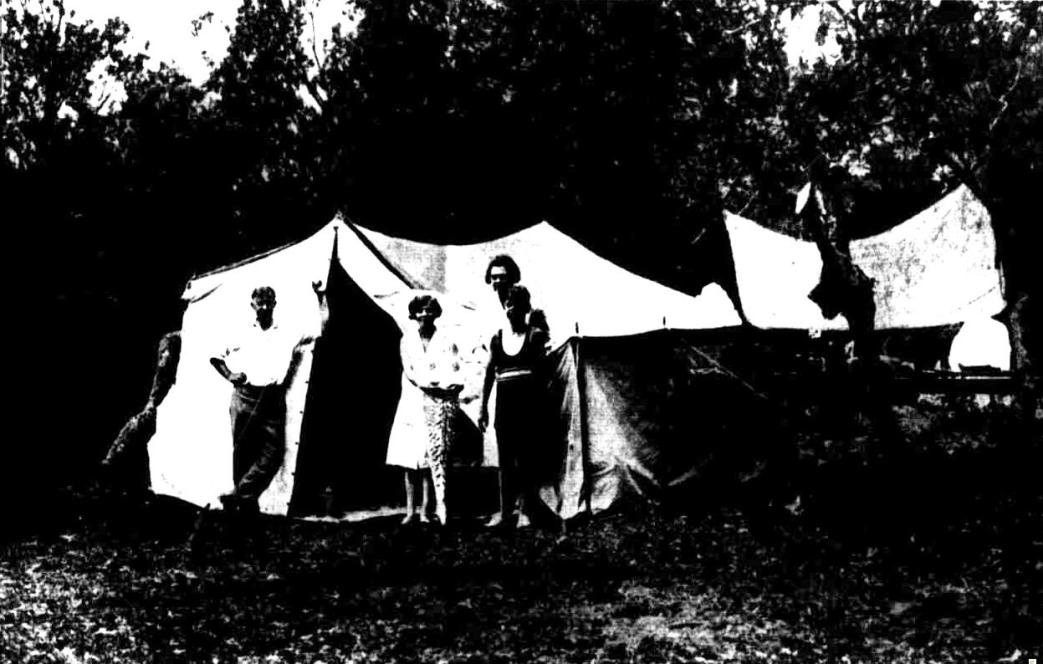
Monte Luke, le célèbre artiste photographe de Sydney, Madame Monte Luke et leur famille à Avalon Beach, près Sydney. LE "MOTOR CAMPING OUT." (1928, October 26). Le Courrier Australien (Sydney, NSW : 1892 - 2011), , p. 3. Retrieved from http://nla.gov.au/nla.news-article161724364
MOTOR CAMP AT AVALON
The N-R-MA has made arrangements for establishing a summer motor camp at Avalon Beach, 22 miles from Sydney, between Narrabeen and Palm Beach. There is a fine surf beach at 'Avalon, and a nine hole golf course, on which members of the association are entitled to play at a reduced fee. A tennis court is situated nearby. All stores and petrol supplies may be obtained at Avalon. Full details of the camp may be obtained from the N-R MA. Touring Department. MOTOR CAMP AT AVALON (1934, November 29). Glen Innes Examiner (NSW : 1908 - 1954), p. 9. Retrieved from http://nla.gov.au/nla.news-article183575064
Avalon Beach Reserve
THE Warringah Shire Council has ad1 vised the N.R.M.A. that action is to be taken to effect the resumption of the whole of the land between Avalon Beach reserve and the Old Barren joey road with the execution of a rectangular portion at the junction of Avalon Parade and Old Barrenjoey road, on which a shop is situated. The association, when advocating the resumption, pointed out that the existing reserve is narrow and sandy, and does not offer facilities for car parking. The area which it is proposed to resume is admirably suited for camping and picnicking. Avalon Beach Reserve (1936, May 13). Sydney Mail (NSW : 1912 - 1938), p. 44. Retrieved from http://nla.gov.au/nla.news-article160638679
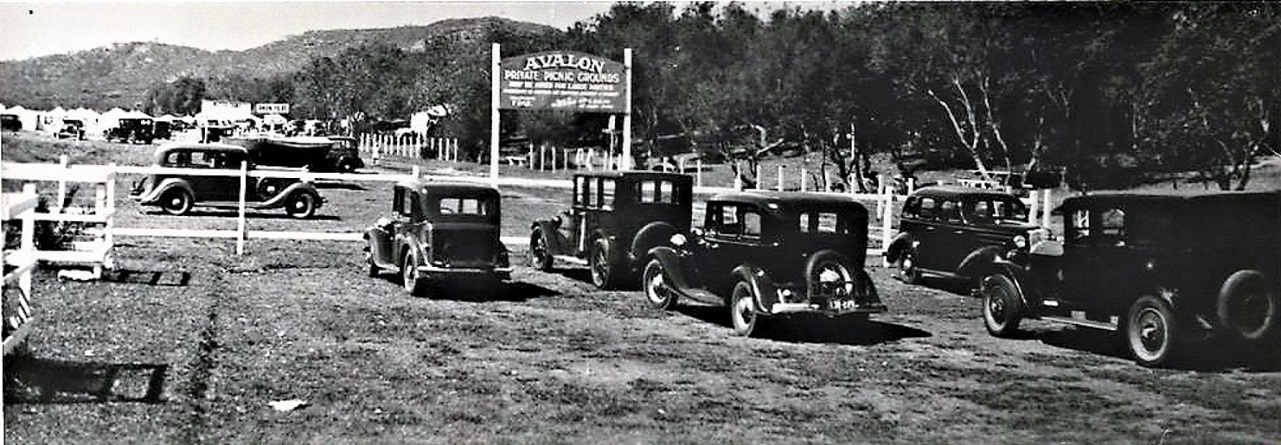
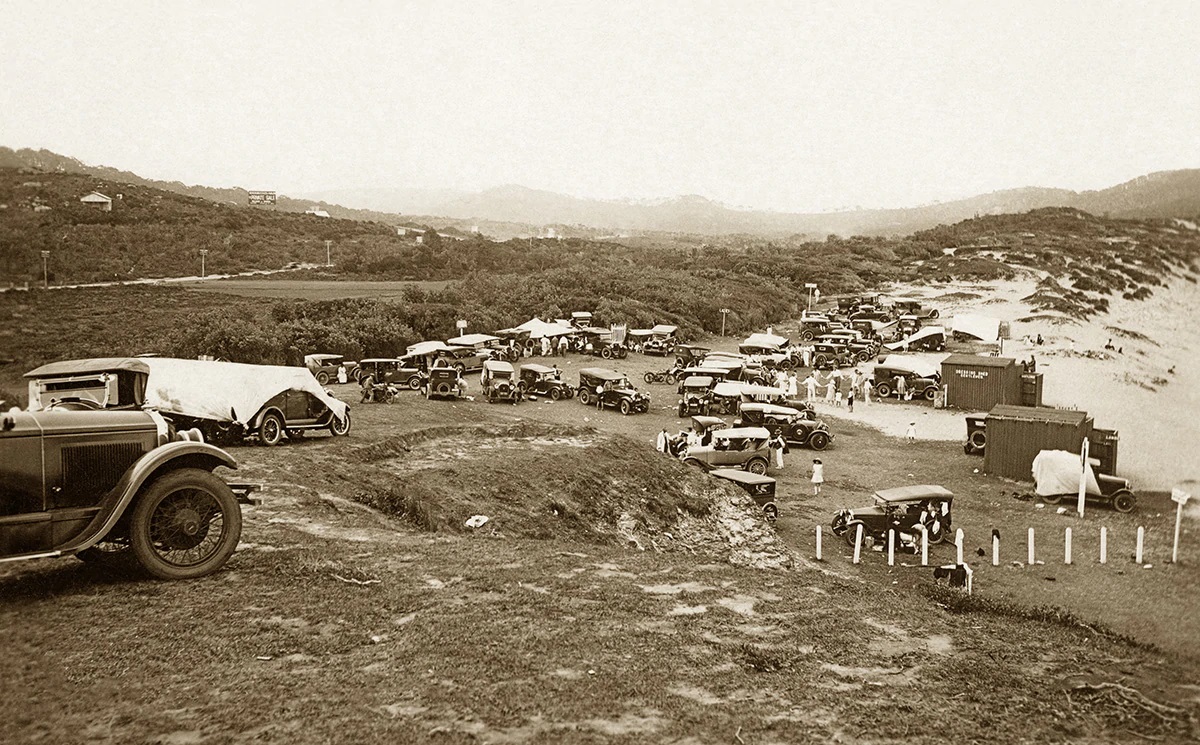
Avalon Beach and sand dunes circa 1931, courtesy National Library of Australia.
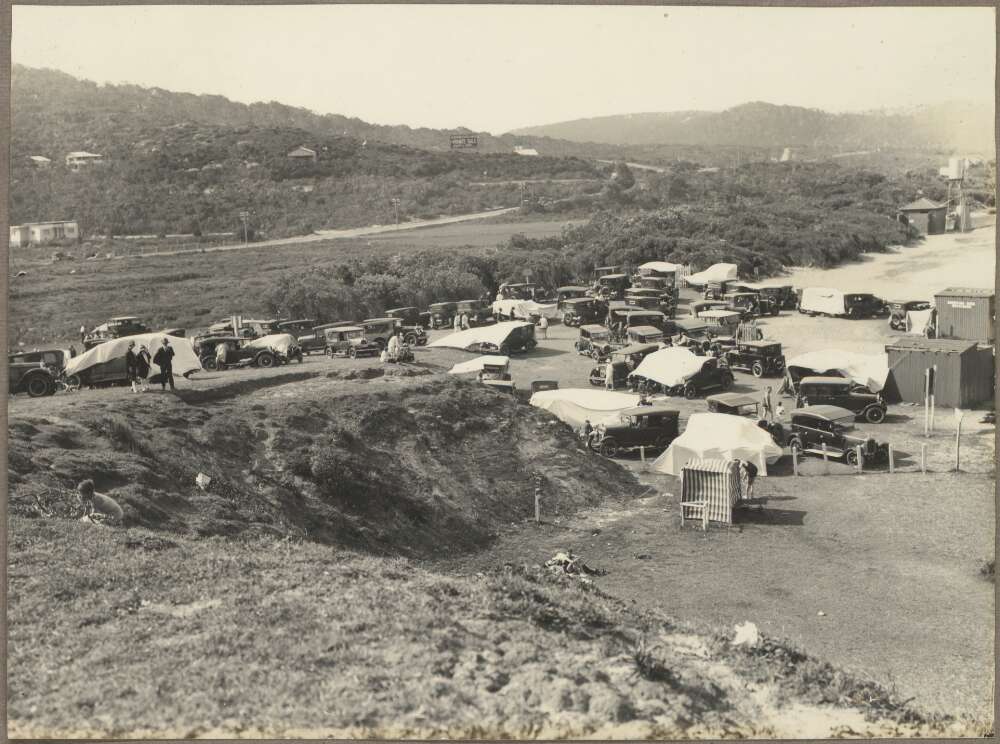
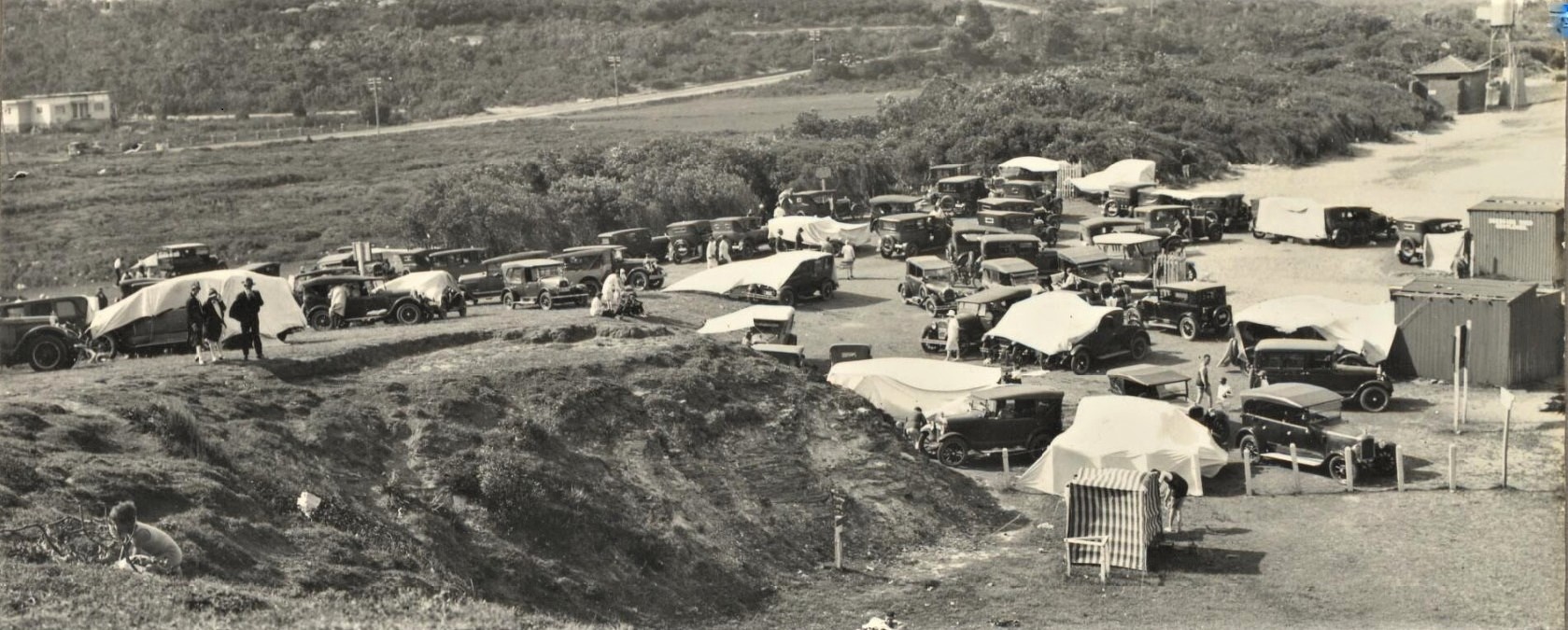
(1930). [Motor cars, some with tarpaulins attached, parked adjacent to Avalon Beach, New South Wales, 1930, 2] Retrieved from http://nla.gov.au/nla.obj-147290238 - and enlarged section from to show the Recreation Reserve as it was then
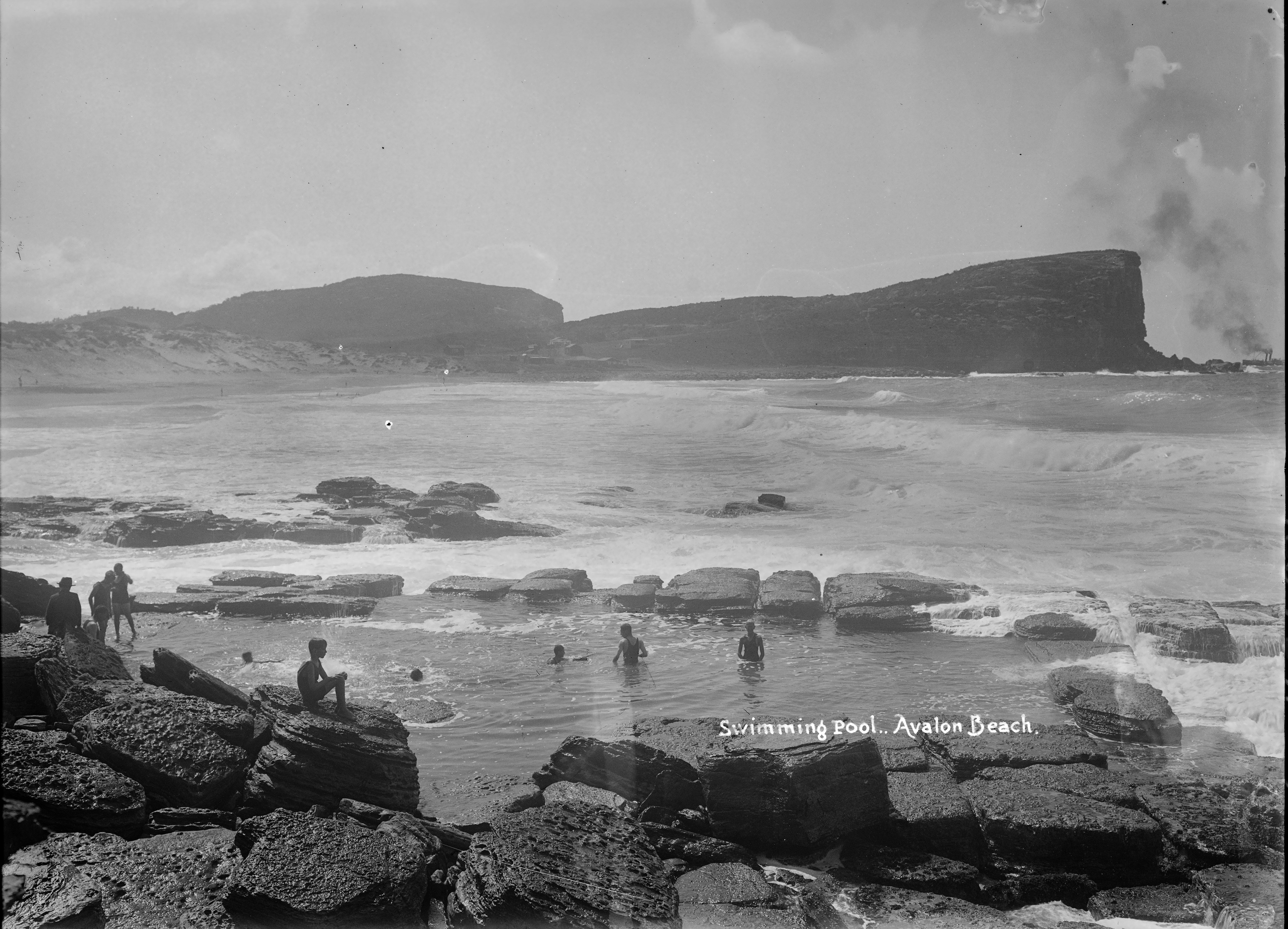
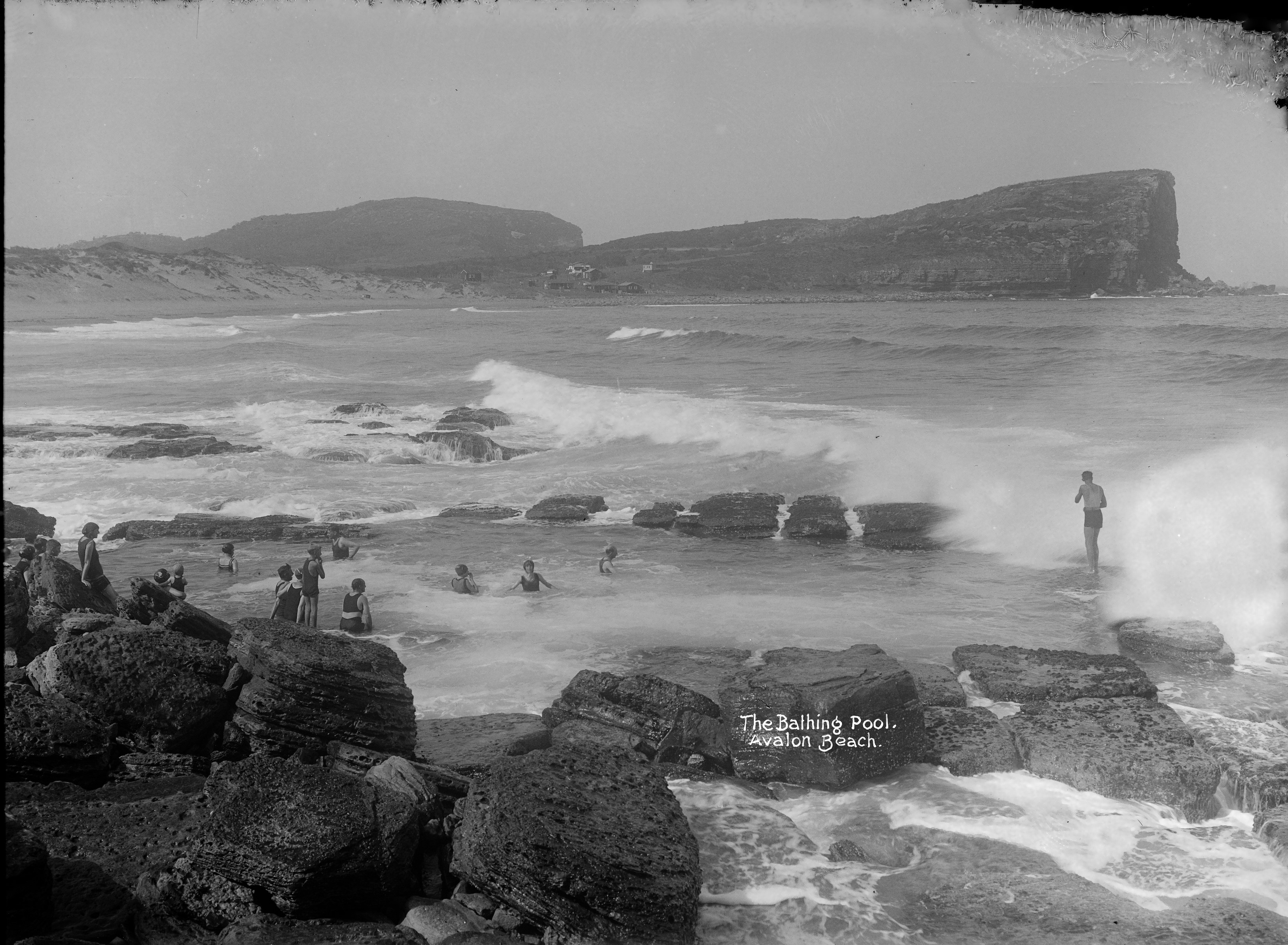
The Bathing Pool Avalon Beach - photos by Rex Hazlewood, circa 1920-1929 Images Courtesy The Mitchell Library, State Library of NSW, No.: c07771_0004_c and ' Swimming Pool' c07771_00043_c
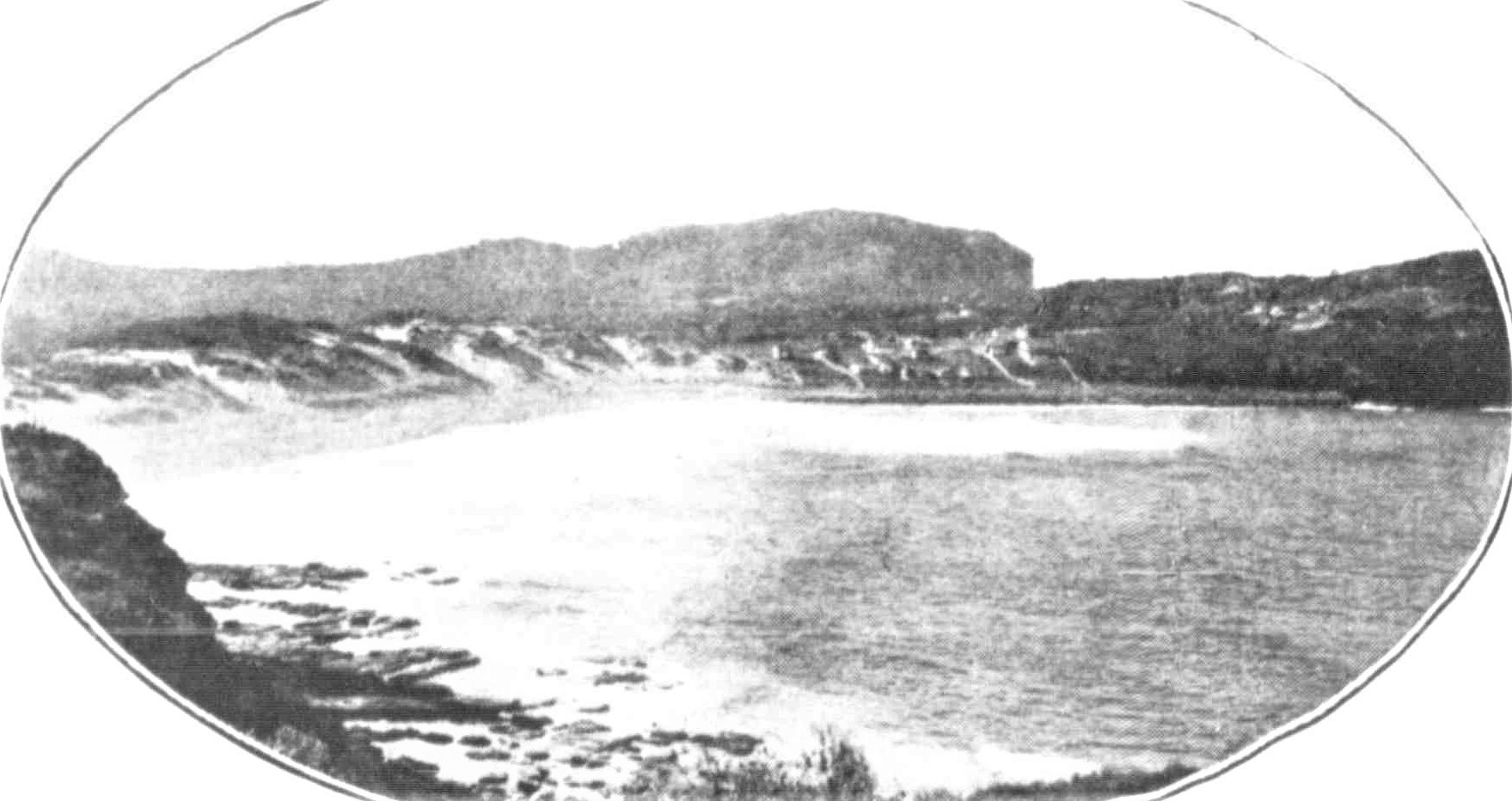
At Avalon Beach, 25 miles from Sydney. Readers' Camera Studies (1936, December 12). Weekly Times (Melbourne, Vic. : 1869 - 1954), p. 42 (FIRST EDITION). Retrieved from http://nla.gov.au/nla.news-article223868655
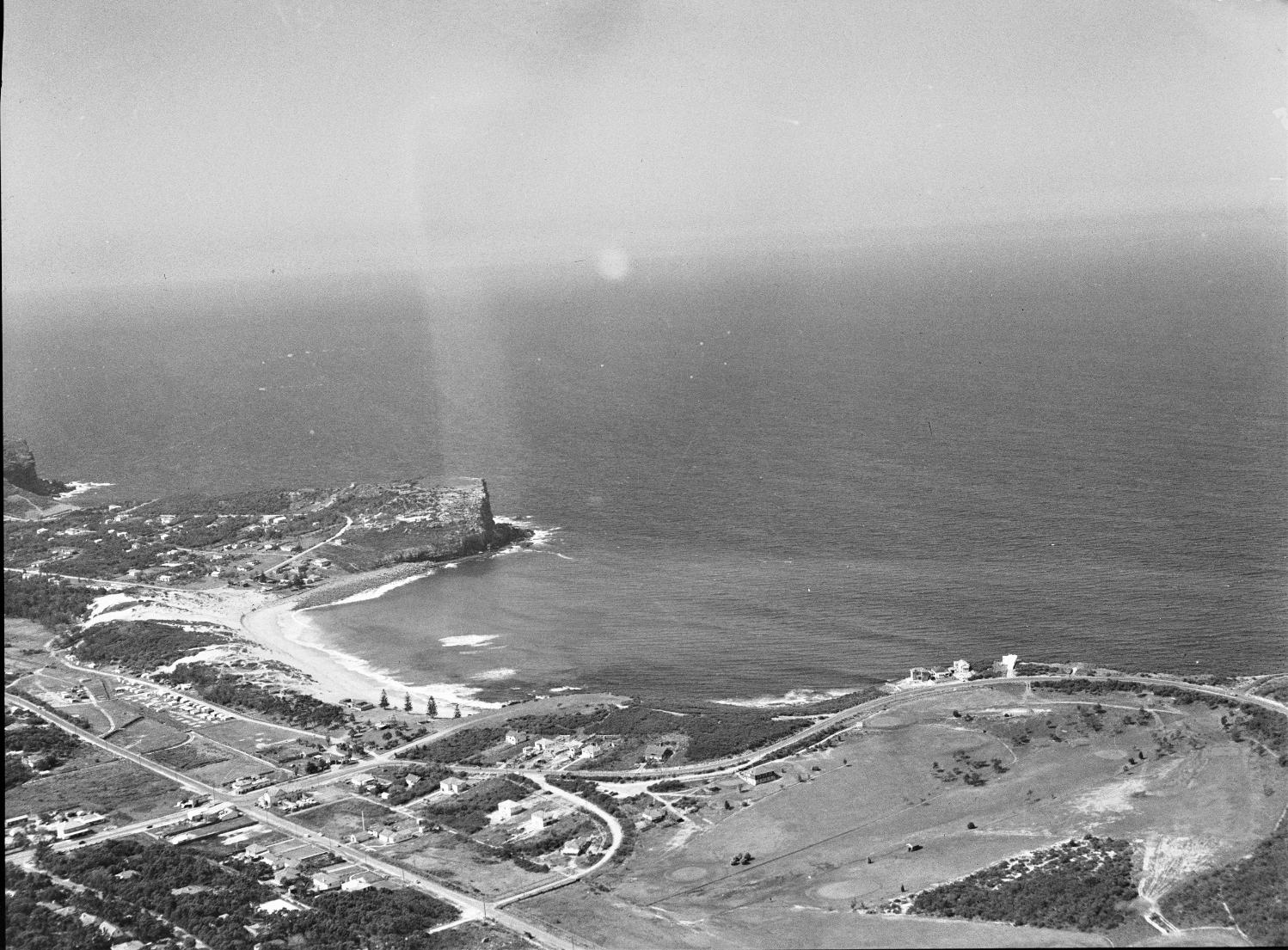
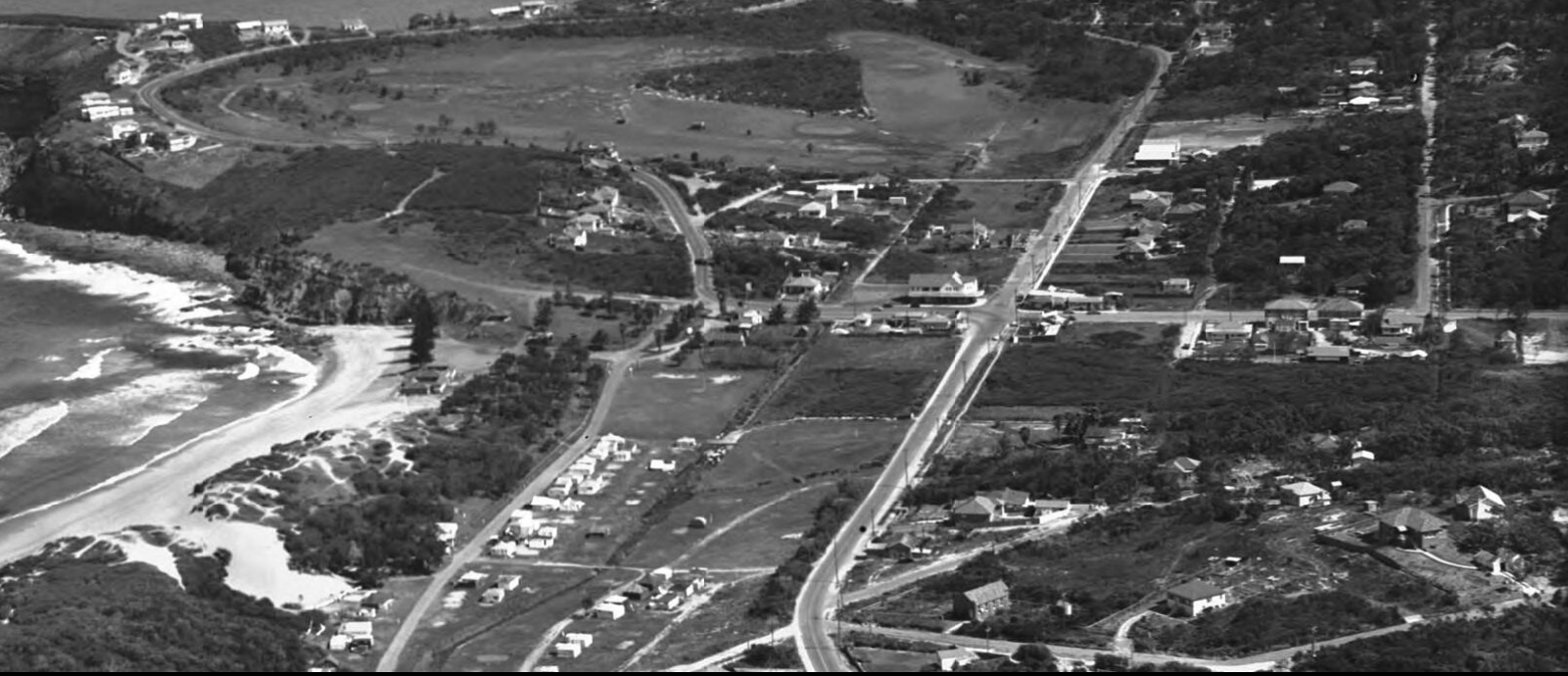
Hurley, Frank. Avalon Beach & surroundings [Aerial views, Sydney, New South Wales] circa 1950-52 (enlarged section from to show camping ground alongside Careel Creek and surrounds) Retrieved from http://nla.gov.au/nla.obj-160005527
This was still basic living, with weather and bushfires to contend with; At many places hoses were used to fight the fire. Water was connected to Avalon only a fortnight ago. (The Sydney Morning Herald, Friday 13 November 1936, page 10).
By now many semi-permanent residents lived in this flat area behind the dunes, a paddock subject to flooding. Their children attended Newport School, often without the luxury of shoes.
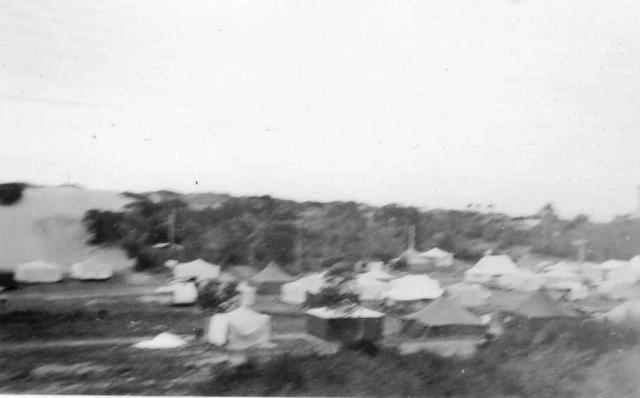
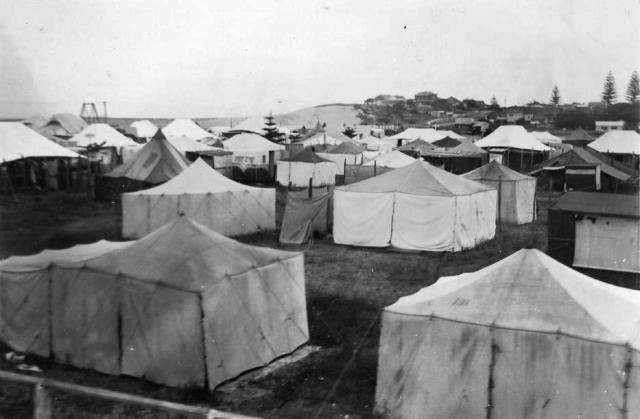
Left: Avalon Camp 1938, courtesy ACT State Archives on Flickr. The records state; ''Site hire is 10/- per week. For this water, sewerage, cleaning and supervision is provided. Warringah Camp its revenue is £11,000 p.a. this camp gives a slum impression. Policing is necessary and evictions. There are 11,000 sites in Warringah, the deficiency is 50%. There are 650 sites each 30' x 30'. '' Photographer unknown. Part of the Archives ACT collection.
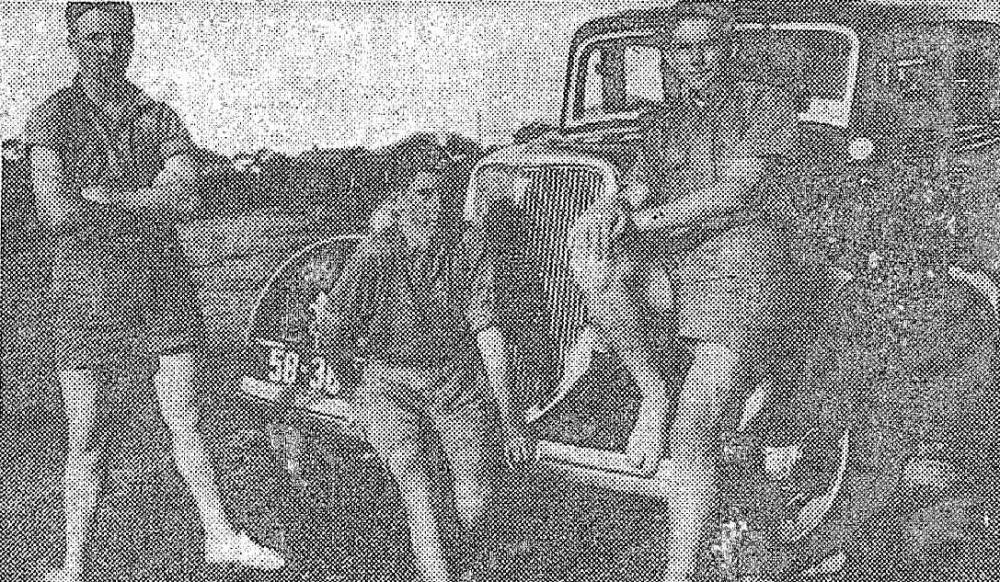
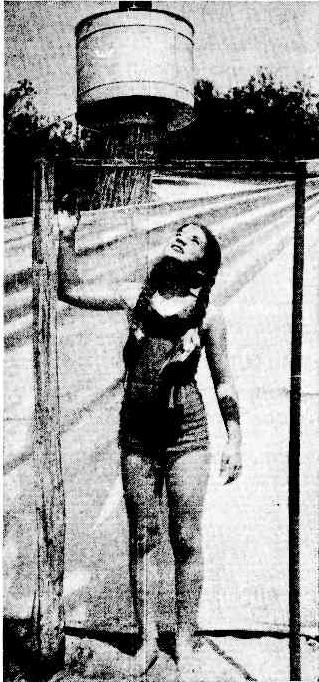
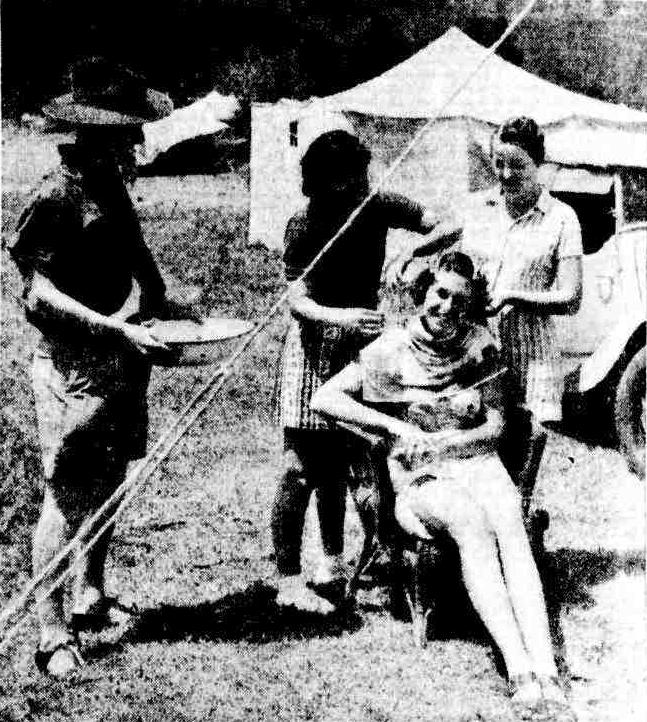
Post WWII Australia had a lot of army surplus equipment and a shortage of building supplies. When speaking to Norma Watt (whose father built Careel Bay Boatshed), Doreen Cherry and Doug Crane, both of whom had to hand build their own homes in Avalon, the prevalence of living in converted garages or tents and hunting around hard and long for building supplies, whether bricks or boards, some resorting to making their own, was a feature in both their reminiscences. Returning service personnel were eager to ‘get on with it’ and begin the kind of life World War Two had put on hold; they wanted to get married and start families, to have their own homes and went about doing so with the same gusto and nerve they’d applied to life during the war.
There was still a shortage of building materials though, and a requirement to apply for these atop this leading to more and more people living in these camps while they awaited these. By 1945, it was estimated that more than 10,000 people spent the Christmas holidays under canvas in the Warringah Shire Council camping areas while others 'made do' with whatever they could find and often lived in simple garages while waiting to build a proper home.
"If you want a thing done, do it yourself," was a pioneer's precept.
Once more it is being put to practice by some house-less Sydney families. Tired of waiting for the contractor who never comes, they're. . Building their own homes By FRANK SNOW: Within a 20-mile radius of Sydney's G.P.O., scores of families are living a home-life that puts the clock back 100 years. Like the early colonists, they are roughing it in all sorts of temporary structures while they build their own homes. Outdoor fireplaces, creek-bank burdening water carrying, kerosene lamps and candles, and general bunk raw conditions are being endured by some of the women belonging to a new age of pioneers. Most of the amateur home-builders are at outlying districts-Liverpool, Moorebank, Asquith, Mt Colah, Kuring-gai, Berowra, Newport, and along the coast to Avalon. In some cases whole neighbour-hoods appear to have been gripped by the build your own home" craze.
Most municipal councils and urban shires are anxious to help the owner of a building site who wants to build, and subject to certain conditions permits, are issued to erect "temporary" premises as an abode. Some people, because of difficulties in getting building materials, have already been a year or more in their temporary habitations. Councils extend the permits in such unavoidable circumstances."
IF you want a thing done, do it yourself," was a pioneer's precept. Once more it is being put to practice by some house-less Sydney families. Tired of waiting for the contractor who never comes, they're., Building their own homes. (1947, May 13). The Sydney Morning Herald, p. 11. Retrieved from http://nla.gov.au/nla.news-article18025875
Earlier in 1947, in part in recognition of the bruised psyche of all who had survived this conflict, and with a firm basis in real truth in other cases, the popularity of ‘holiday camping’ was touted again and lends an insight into Avalon’s Camping grounds and tents fitted out like houses, complete, in some cases, with small plots of flowers:
Canvas Holiday . . . By SUSAN ROSS
HOLIDAY camping is reaching a new peak of popularity this summer. Reasons are the scarcity of accommodation at resorts, a more generous petrol allowance for motorists, and the disposal of military equipment which is ideal for campers. January, when schools are closed, is the month for family holidays. For the last week or more thousands of families, have moved into canvas and. caravan settlements at favourite spots throughout the State. Lately—to take just one popular area – there have been 900 tents at Lake Park, Narrabeen Lakes, 500 at Philip Park, Palm Beach, and 150 at Avalon Beach.
Few rigours remain attached to holiday camp life. Primus and oil stoves and a multitude of portable domestic gadgets, mostly from military disposal stores, have seen to that. WHEN I visited the camping ground at Avalon Beach recently, 150 tents and caravans housed a sun-tanned community, lacking few - of the comforts of home -Washing fluttered on tent - ropes, radios gave the news and there was a healthy sound of primuses and kerosene stoves working to prepare their mid-day meal.
I called at a smart green and white tent which Mrs. Elsie O'Day, of Arncliffe, her husband, and three small children, are sharing with Mr. and Mrs. H. Bowden, of Ashfield, for six weeks of the school holidays. They conducted me through the tent which was divided by curtains into three rooms. The bedrooms contained folding beds and collapsible wardrobes and cabinet. Hand mirrors were fastened to tent poles. In the living room they have a long folding table, seven folding chairs, an ex-army ice food box, and a folding food cabinet. "We have made full use of army equipment," Mrs. O'Day said. "The ice box was one that was used in the front line for keeping food hot for the troops, but makes a perfect ice chest."
A caravan painted cream and orange and stationed near the O'Day's tent caught my eye. I called over and found Mr. and Mrs. J. Southwick of Glenbrook at home. Canvas blinds, attractively striped in orange, brown, yellow, green and beige, keep the caravan cool inside and the curtains Mrs. Southwick made and gauze coverings keep out stray flies and insects. inside green and beige linoleum covers the floor, matching the green Chairs and table. At night the table is lifted out allowing the cushioned bunk behind it to collapse into a double bed. Another double bunk forms the opposite end of their 14ft 6in x 6ft 4in house. Canvas Holiday. (1947, January 7). The Sydney Morning Herald .p. 12 Supplement: The Sydney Morning Herald Magazine.. Retrieved August 4, 2012, from http://nla.gov.au/nla.news-article27903905
Published in the child's section of this newspaper, a visitor's perspective during Summer in the Boxing Day edition:
AVALON: Avalon Beach has a camping area, with golden sandhills forming a background. It's a lovely place to picnic. There are grassy slopes to eat your lunch on, and there are slippery-dips, swings, monkey-bars and many other delightful things. The surf is beautiful, but if you prefer still water, you can swim in the rock baths. Nearly every weekend I go down to m our caravan and spend enjoyable days basking in the sunshine. If you like walking you can visit St. Michael's Cave. It has a small entrance but a large interior. — Bruce Arbon, 497 Great North Road, Abbotsford. RAMBLER'S NOTEBOOK (1948, December 26). The Sun (Sydney, NSW : 1910 - 1954), , p. 3 (SUPPLEMENT TO THE SUNDAY SUN AND GUARDIAN). Retrieved from http://nla.gov.au/nla.news-article228693060
Some long term residents recall flooding through the Avalon Camping Grounds as a regular occurrence and seeing tents and possessions being swept from the area "all the way to Careel Bay":
THEY SUFFERED DISCOMFORT FROM THE RAIN: Mr. Syd Forrester, of Leichhardt, digging a trench during heavy rain in an effort to prevent the flooding of his tent at the Avalon camping ground yesterday.
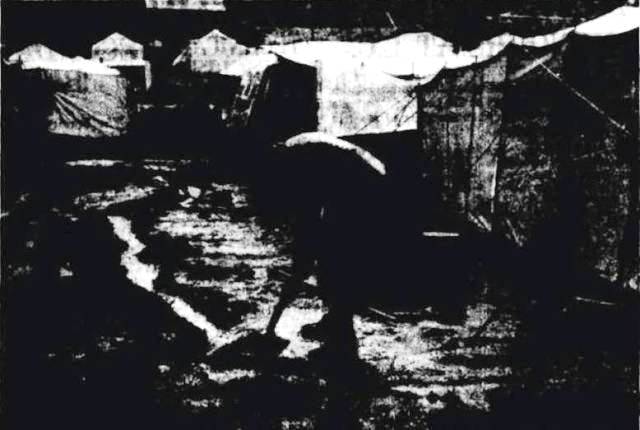
The occupants of six of the 90 tents on the reserve left for home. THEY SUFFERED DISCOMFORT FROM THE RAIN. (1948, January 15). The Sydney Morning Herald, p. 3. Retrieved from http://nla.gov.au/nla.news-article18057497
Warringah Shire Campaign - Shack And Tent Dwellers Lose Their Permits - Check For Rackets
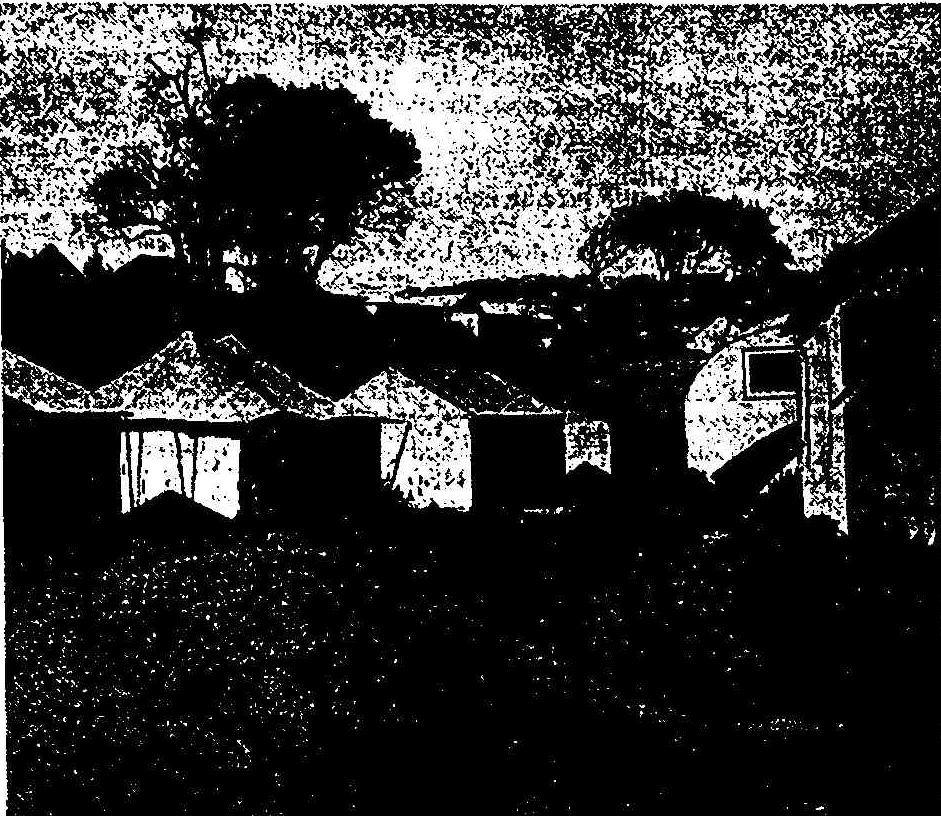
Temporary camps and huts at Palm Beach.
More than 1,000 families living in garages, tents, sheds and shacks between Manly Vale and Palm Beach are affected by a recent decision of Warringah Shire Council to clean up sub-standard homes. Last week the council started to send out hundreds of notices, informing occu-pants of "temporary dwellings" that permission to occupy the dwellings had been revoked by the council.
The council informed the people that they would have to comply with certain provisions to get a new order to remain in occupancy.
The president of the shire, Cr. J. L. Fisher, said the council had taken this action to:
* Clean up a large number of sub-standard homes;
* Stop racketeers from fleecing homeless people;
* Improve health standards in the shire.
"We are not refusing a home to the genuine homeless, but we are making it impossible for the racketeer and the speculator to deal in temporary dwellings," he said.
Cr. Fisher said the racketeers had exploited homeless people by erecting a garage or temporary dwelling on a block of land, putting a few sticks of furniture in it, and selling it as a "home" for big money. There were about 1,100 temporary dwellings in the shire.
Three Conditions
The council in the past had waived building regulations to allow homeless people to occupy temporary dwellings while they built a house. Cr. Fisher said. In hundreds of instances the owners of such places had made no attempt to erect a house.
Now permits to occupy a temporary dwelling would be issued only provided:
THE BUILDING is to be part of a permanent structure approved by council;
THE APPLICANT makes a statutory declaration that the building would be used as a residential building;.
A CAVEAT is entered on the deeds of the property showing it to be a temporary dwelling-not transferable by law.
Cr. Fisher said people in temporary dwellings who intended to build permanent homes on their land would be given reasonable time to do so.
PALM BEACH TENTS
Unless council officers were satisfied that these people were making attempts to erect permanent homes, action would be taken. He said the council at a later meeting would determine its attitude to people who were living permanently in canvas homes on council camping areas at Palm Beach, Lake Park, and other places.
These people paid a camp fee of 15/ a week to the council. Comments from occupants of temporary dwellings in the area last week included these:
Mr. Peter Minigle, Palm Beach camping area: "I am a pensioned stonemason, and could not afford to live any-where else. My wife and I are comfortable here, and much healthier than when we were living at Paddington."
Mrs. M. Potronljevic, PAYING IT OFF Mrs. M. Petronljevfc, Careel Head Road, North Avalon: "We don't like it, but we have to live in a garage until we can build a home. My husband and I had nowhere else to live when we married, and paid £ 1,000 for the land and dwelling. We are still paying it off before we can build."
A woman at North Avalon said she was paying £2 a week rent for a 24ft by 12ft dwelling erected by a man who had since built a home on another block for himself. A man at Mona Vale said he had built the first two rooms of his home, but was held up for finance to complete the dwelling.
Another Housing Problem - Injustice Seen To Landlords
The president of the N.S.W. Real Estate Institute, Mr. Harry Amadio, said proposed amendments to the Landlord and Tenant Act ignored the most important question for the home owner--when could he gain possession of his own home. Nor did they provide any relief to property owners whose charges were pegged at 1939 levels.
Major provisions of amendments, approved by the State Cabinet but yet to be passed by Parliament, are that Federal Land Tax may be taken into consideration in rents for some large properties, and that premises let for a continuous period of more than eight weeks to be disqualified as "holiday premises."
The amendments fail by far to remedy injustices and anomalies of the Act," Mr. Amadio said. The amendments do nothing to encourage an increase in urgently required accommodation, either by way of new buildings for letting purposes. or subdivision of large houses to provide home units.
"Owners will not construct new buildings nor will home owners subdivide their homes, knowing that they will be compelled to take rentals based on 1939 values and, to make matters worse, will have no control over their tenants."
Mr. Amadio said that if a person subdivided his home and accepted a tenant he could not be sure of getting the tenant out again, even if he turned out to be a black-marketeer, S.P. bookmaker, or habitual drunkard.
COSTLY COURTS
The owner would have to go through the long procedure of the Courts and he would be lucky if it cost him less than £50. Even then he would be quite unassured of success.
Mr. Amadio said rents were pegged on 1939 levels, but it was safe to assume that most owners of properties were receiving a smaller net return today than in 1939. Warringah Shire Campaign Shack And Tent Dwellers Lose Their Permits (1952, May 25). The Sunday Herald (Sydney, NSW : 1949 - 1953), , p. 5. Retrieved from http://nla.gov.au/nla.news-article28671967
On July 28th, 1952 four feet of water rushed through these tents again. Those forced to live permanently in the Avalon Camping Ground were avoided by some garage or cottage dwelling residents, their children warned to stay away as they were ‘gypsies’. Another flooding quickly restored the prevalent community spirit that was and is the village of Avalon’s prevailing tendency:
Freak Storm Hits Avalon: Drives Out Tent Dwellers
A freak hailstorm yesterday flooded many parts of Avalon, doing hundreds of pounds' worth of damage. Scores of people living in the camping area at Avalon were forced to leave their bornes. Tents were torn to-shreds and the roofs of caravans severely damaged. Several tents and the furniture inside them were washed out to sea by floodwaters. Most of the families living in the camping area were given shelter for the night in the Avalon surf shed.
Mrs. Joyce Andries, of the Avalon Fire Station, said last night that immediately residents realised the floodwaters were rising, volunteers raced to the camping area to help to evacuate the children. The children were carried to safety through the racing water. Most of them were taken to the Avalon surf sheds, and the remainder were taken to the homes of relatives and friends.
Among the worst sufferers in the camping area were Mr. and Mrs. V. Harrington, who estimated their losses at about £.250. Their tent was not washed away, but damage to the roofing, sides and floor coverings was "enormous," said Mr. Harrington. The roof of Harrington’s tent was torn to shreds by the hailstones while water roared over the floor, destroying floor coverings and food supplies. Mr. Harrington had to use a suction pump to clear the water from the tent. He said he had only just cleaned up and repaired the damage done by last Saturday morning's floods. The storm began shortly after 2 p.m. and lasted for nearly three and a half hours.
Hailstones, measuring almost two and a half inches across, rained on the shopping and camping centres. Stormwater, in places three feet deep, raced through the shopping centre, flooding shops and homes. Hundreds of pounds' worth of stock in the shops was destroyed. Road traffic from Palm Beach and Sydney was dislocated. Vehicles were unable to pass Avalon.
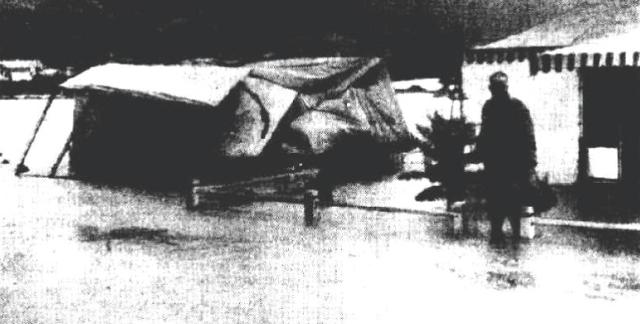
The tent on the left, owned by Mr D. Needham, was completely capsized by the rushing waters.
One of the shops which suffered most damage was Le Clercq's general merchandise store in Avalon Parade. Mr. Le Clercq, the owner, bored holes in the floorboards in an attempt to drain away the two feet of water which was damaging his goods.
He said he had only just cleaned up the debris from a flood which occurred on Friday. He had suffered more than £250 worth of damage in that flood. The rush of water through Avalon Parade was so great at one stage that several cars were almost submerged. The swirling flood carried one car almost 200 yards before dumping it on the pavement. Freak Storm Hits Avalon: Drives Out Tent Dwellers. (1953, May 7). The Sydney Morning Herald, p. 1. Retrieved February 1, 2012, from http://nla.gov.au/nla.news-article18372783
See: Narrabeen Lagoon And Collaroy Beachfront: Storms And Flood Tides Of The Past
A few weeks later:
Avalon Camp To Be Closed;
The Warringah Shire Council decided on Monday night to close the Avalon camping area in three months' time. The shire president, Councillor J. L. Fisher, said the council considered the camp an eyesore and not in the best interests of the district. Forty-three families are living at the camp. Hundreds of people camp on the area during holidays. Councillor Fisher said accommodation would be found for Avalon campers who wished to transfer their camps to other camping areas in the shire. Avalon Camp To Be Closed. (1953, May 27). The Sydney Morning Herald, p. 3. Retrieved from http://nla.gov.au/nla.news-article18372351
Sand Mining
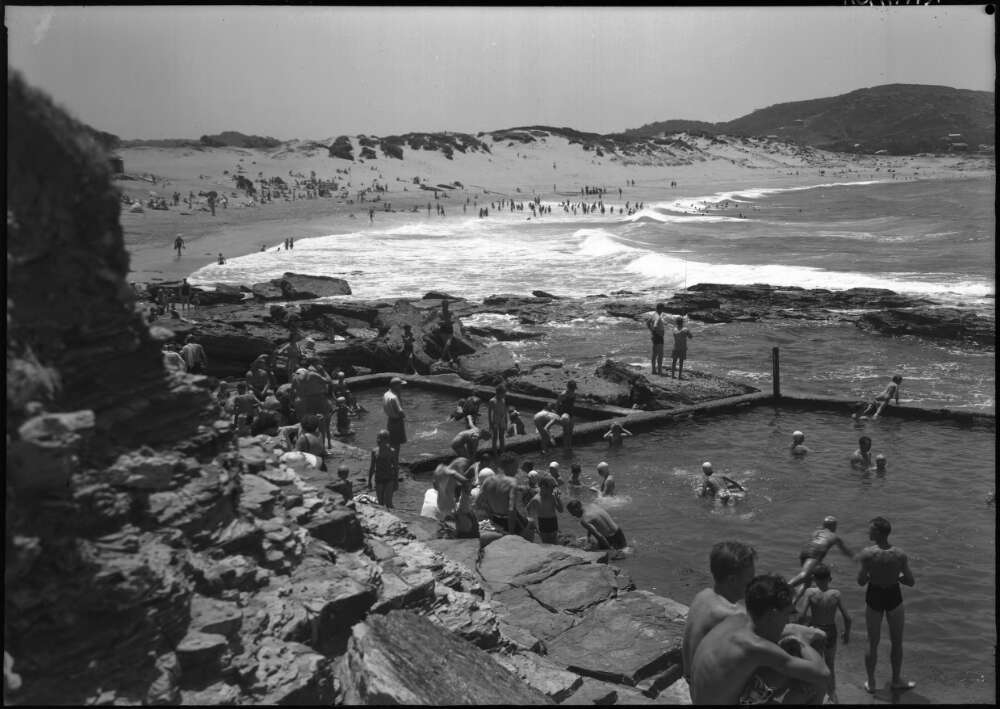
Hurley, Frank. ([ca.195-?]). [Sea baths and beach, Avalon Beach, New South Wales] Retrieved from http://nla.gov.au/nla.obj-160160048
However it was a lease to mine sand from Avalon Beach granted yet again by the Warringah Shire Council in 1952 which saw masses of sand carted away for profit and problems that occurred as a result.
The papers of then would indicate everyone was invited to cart away Avalon's sand dunes:
AVALON SAND PITS PTY. LTD.
Builders up the North Shore line and in the Warringah and Manly areas will be interested to know that a new sand pit has been opened at Avalon. Lorries may be sent there with an assurance that sand will be available. Mechanical loading apparatus will help to speed up the process of loading. The Avalon Sand Pits Pty. Ltd. will be a welcome acquisition to the district. AVALON SAND PITS PTY. LTD. (1952, January 16). Construction (Sydney, NSW : 1938 - 1954), p. 4. Retrieved from http://nla.gov.au/nla.news-article223546980
For most of the 1950's and even into the late 1960s, commercial interests had been removing tons of sand from the northern dune, which included a huge spur buttressing this dune. Repeated requests from the Avalon Preservation Trust for a court injunction from Warringah Shire Council to stop this destructive activity were constantly ignored.
The Avalon Preservation Trust (now the Avalon Preservation Association) sent a telegram to the Minister for Local Government requesting cessation of the work and was advised that the State Planning were seeking to acquire the land for recreation purposes. The Trust was also informed that the council had the situation in hand. In truth neither had the situation in hand at all, so some members of the Trust took it upon themselves to stage a sit-in and create a vehicular barricade to stop the trucks from accessing the sand-loading equipment. Apparently this had the desired effect and a further injunction was successful.
How much sand would have been left had the Trust members not brought about this action?
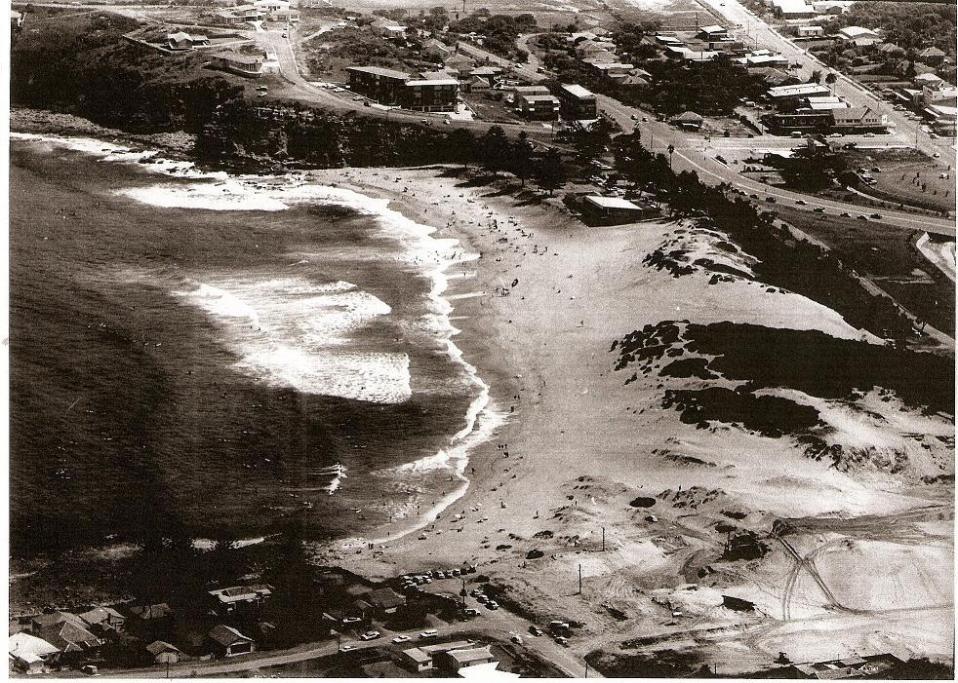
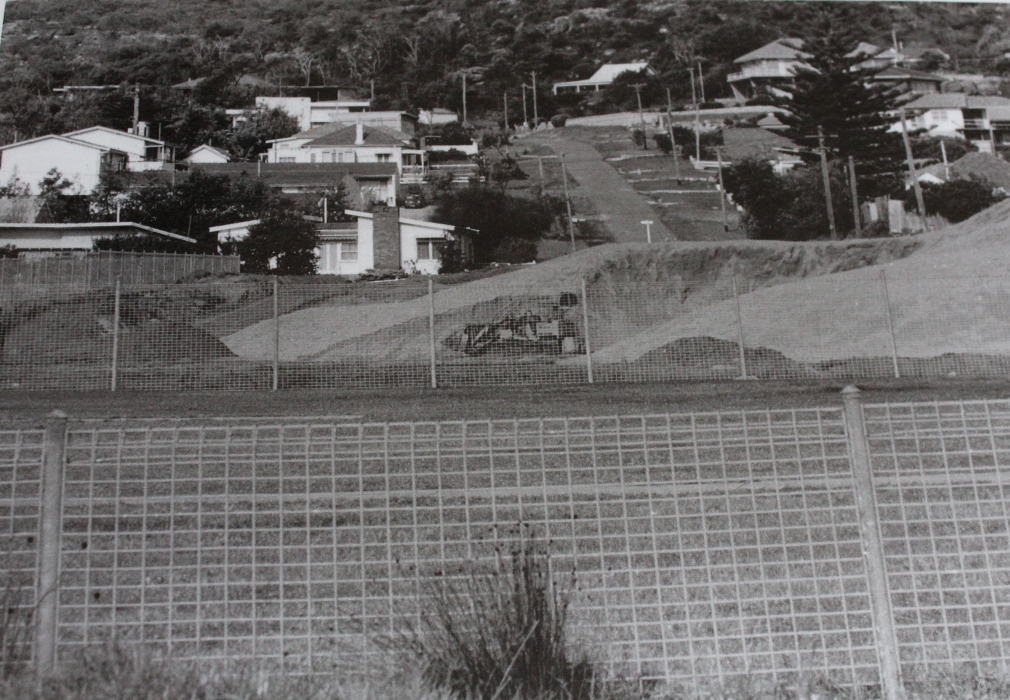
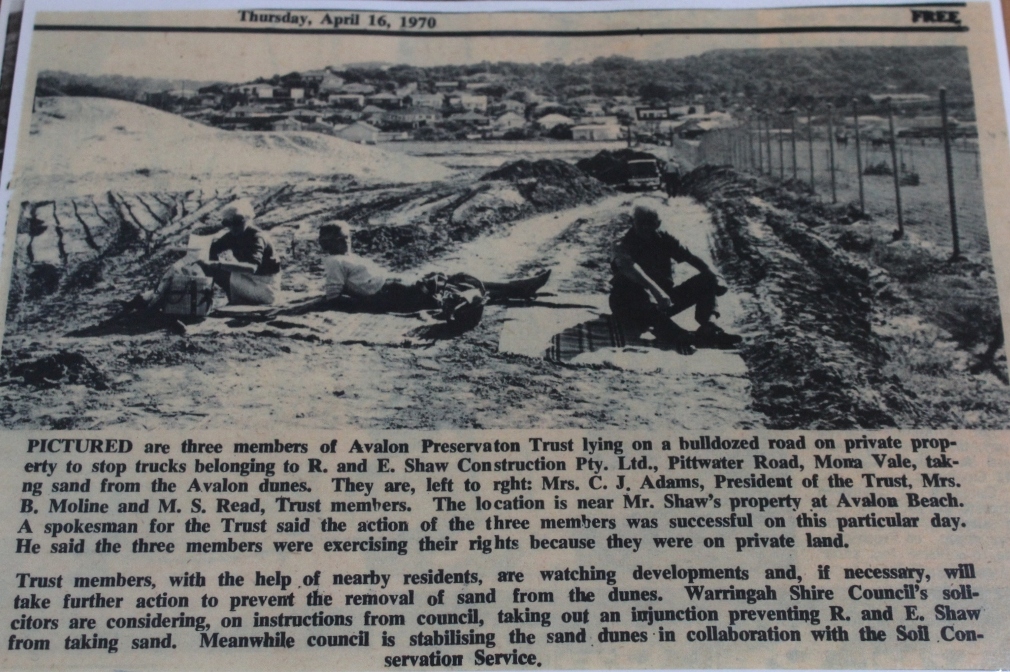
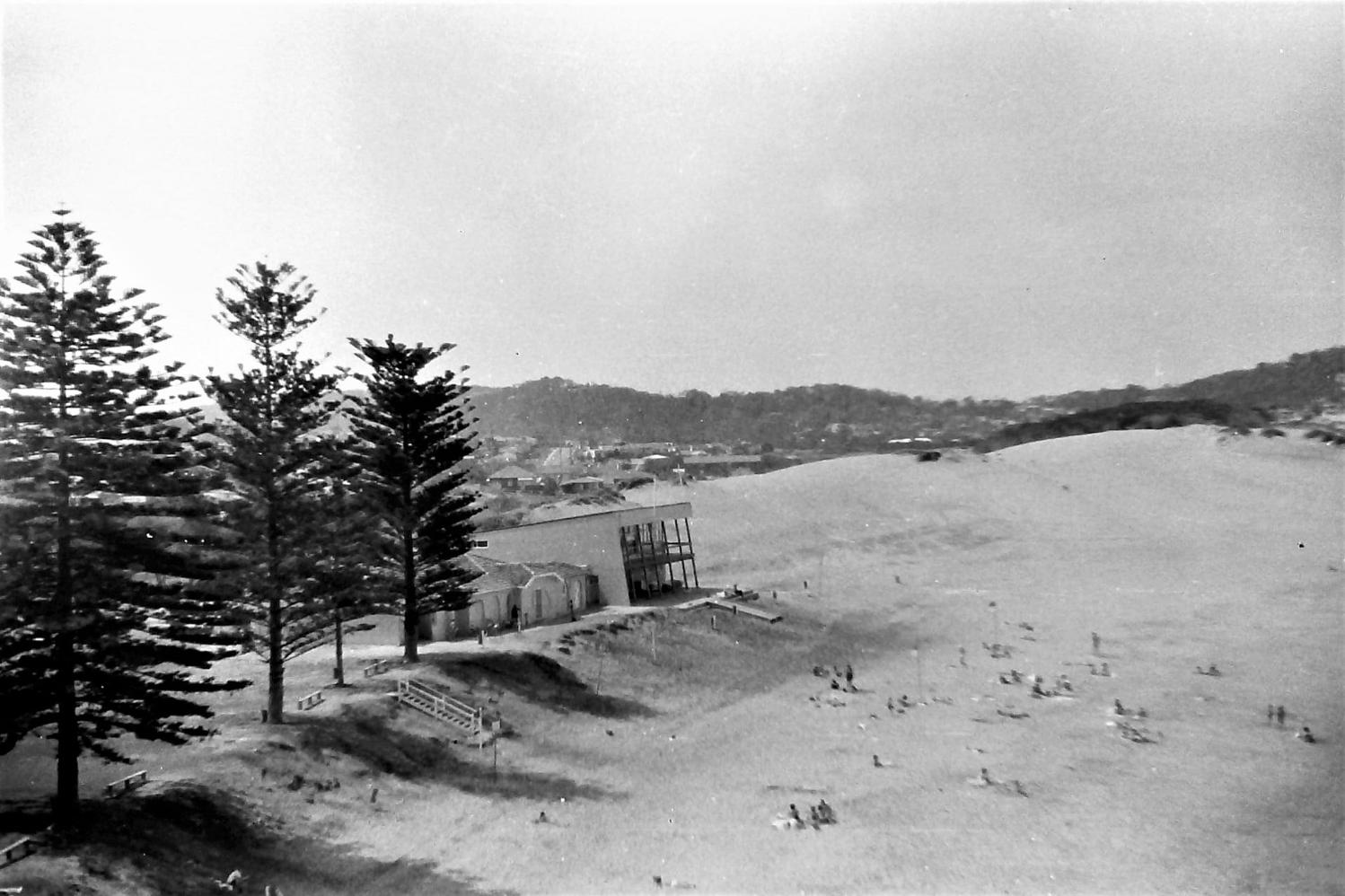
1968 - Avalon beach showing both 1st and 2nd clubhouses. Photo: Gary Clist
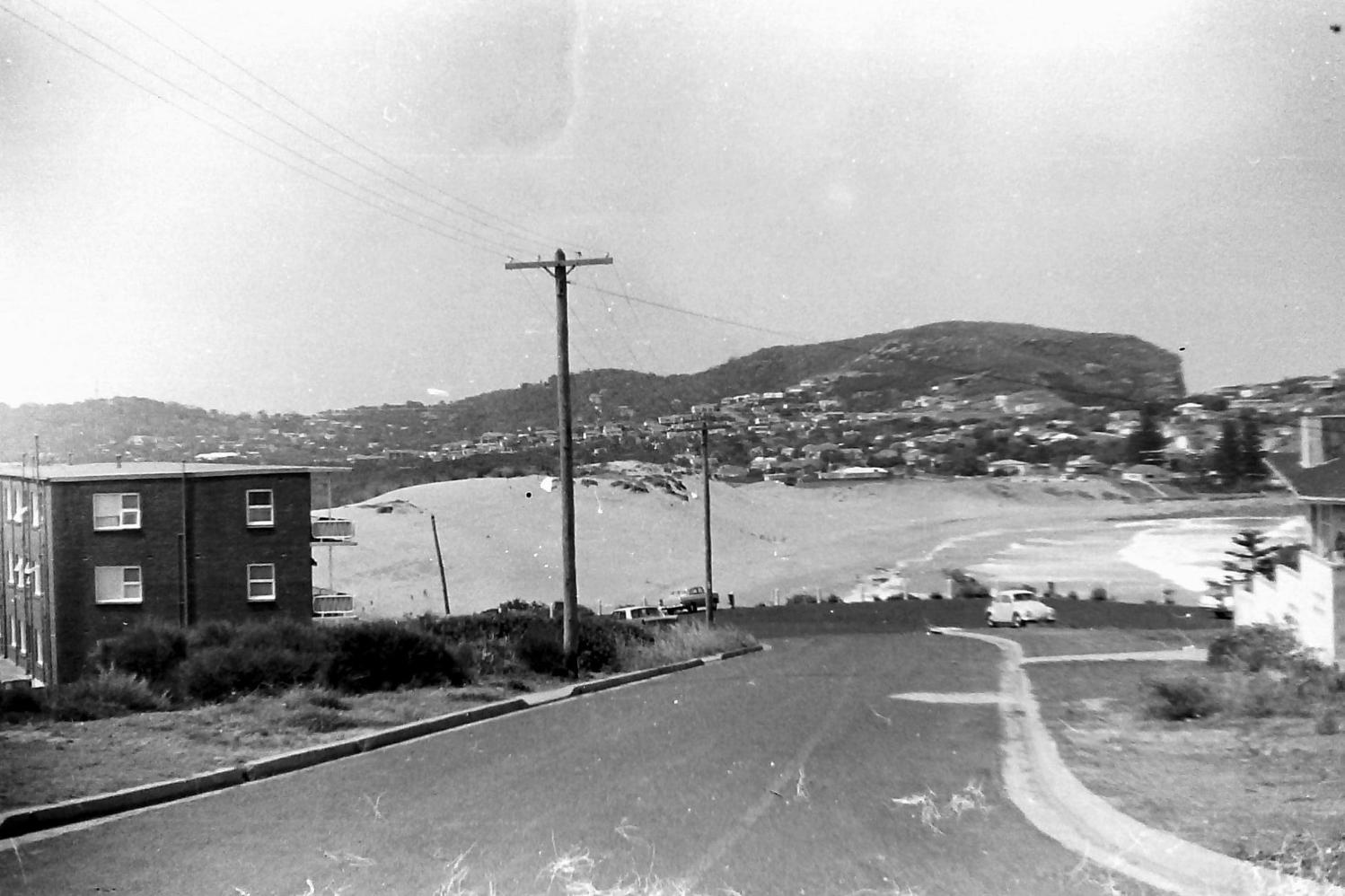
photo taken from Surfside Avenue looking northwest. Photo: Gary Clist
The degradation was so bad, with so much of the vegetation holding the dunes together removed, that the dunes were being blown literally into the urban streets. In 1970 rehabilitations works commenced, as reported in this April 1974 edition of the Soil Conservation Service of New South Wales, which lists what native species were planted, available to download in full online at: Soil Conservation Service of New South Wales. (1945). Journal of the Soil Conservation Service of New South Wales Retrieved from http://nla.gov.au/nla.obj-750393209
STABILIZATION OF AVALON SAND DUNES
BY D. D. H. GODFREY
Soil Conservationist
AVALON is one of the many popular resort beaches within the Sydney metropolitan area and is approximately 35km north of the city. It is located on a peninsular approximately 1.5 km wide bounded by the Pacific Ocean on the east and Pittwater on the west. The average annual rainfall is approximately 1 200 mm with greatest incidence from November to June. The permanent population of Avalon in 1966 was 5,247 and in 1972 it was estimated by the Warringah Shire Council to be 6,970.
The influx of holiday-makers, especially during summer holidays, results in these figures being doubled for approximately 3 months of each year. Day visitors to the beach during summer also impose a very heavy pressure on the beach and dune areas.
The Avalon sand dunes rise steeply from the beach to a height, in places, of 20 metres above sea level. The high rear dune gives an amphitheatre effect which protects the beach from off-shore winds and protects the residential area and business area from onshore winds (figure 2).
THE PROBLEM
Prior to stabilization work the high sand dunes behind Avalon Beach were unstable and drifting sand was encroaching onto the recreation area on the landward side of the beach. Sand blowing from the top of the high dunes was an almost constant source of irritation to the business and residential sections of Avalon and the problem was increasing each year. Sand blowing off the beach was contributing to a long-term recession of the beach line and general beach deterioration.
This situation commenced to develop in the early 1920’s. The dunal area was relatively stable prior to this as can be seen in figure 3. At that time the crest and the western slope of the dunes were stable because of the dense cover of native vegetation. The original vegetation on the area was dominantly tea-tree ( Leptospermum laevigatum) with some banksia ( Banksia integrifolia) and wattles ( Acacia spp ) chiefly on the fringes. Ground cover under the trees was sparse but undoubtedly in the more open areas sand spinifex grass (Spinifex hirsutus) and couch grass (Cynodon dactylori) were present in quantity. Some evidence of this association still exists on a small section of the dunes to the north where students and teachers forgather to study natural sciences.
Continued sand-drift and sand removal if unchecked would result in lowering of the dune height which would allow incursion of salt laden winds and break down the normally stable beach-bay-dune complex.
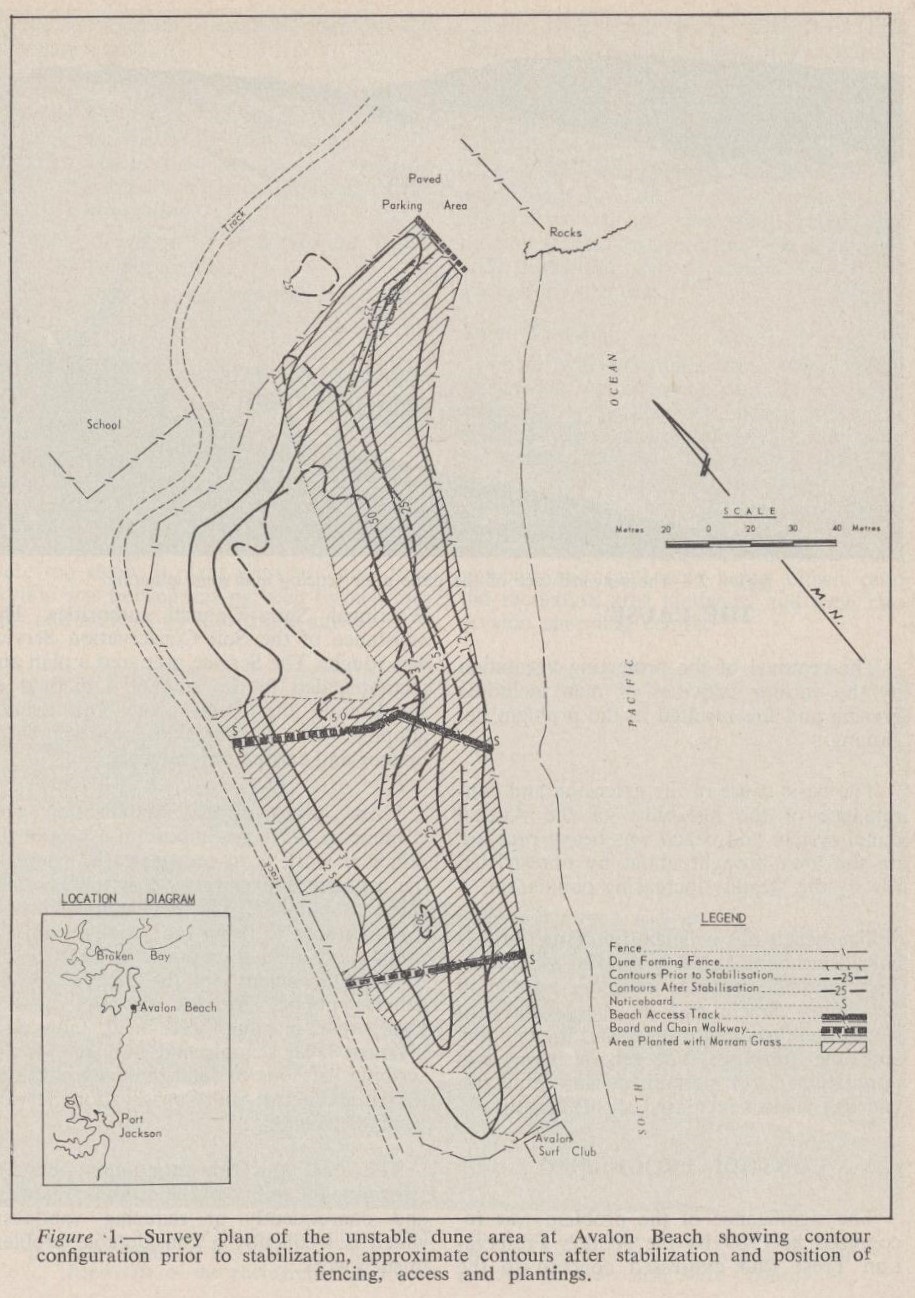
Figure 1.-Survey plan of the unstable dune area at Avalon Beach showing contour configuration prior to stabilization, approximate contours after stabilization and position of fencing, access and plantings. G 45725—2
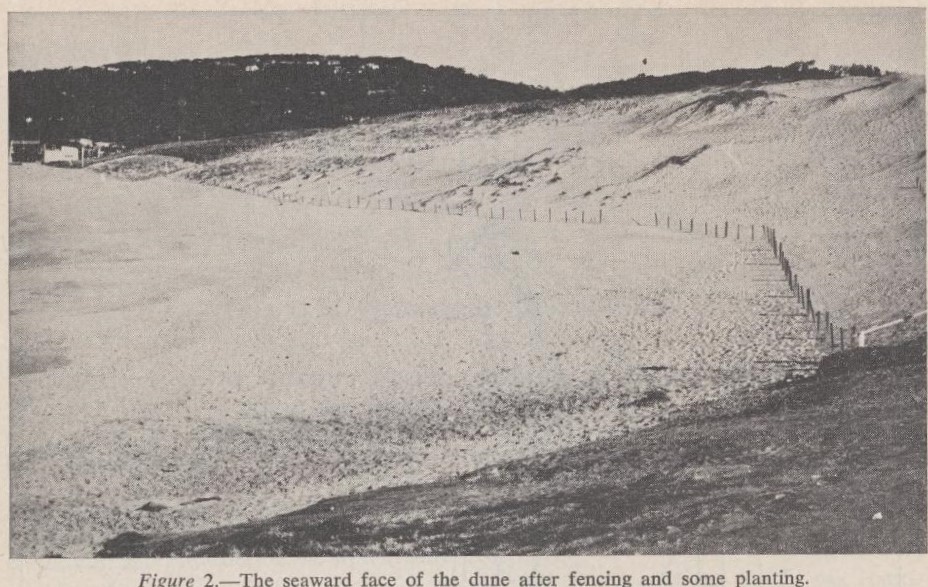
Figure 2. — The seaward face of the dune after fencing and some planting.
THE CAUSE
The removal of the protecting vegetation by the various activities of man including grazing and fire resulted in the problem beginning.
The basic cause of the extension and continuance of the instability of the Avalon dunal system and beach was heavy pressure on the area brought about by unrestricted use by the steadily increasing population.
The beach has a delightful setting and is considered comparatively safe for swimmers. The sandhills provide excellent recreation for young people and the steep landward slopes facilitate removal of sand for building and other purposes. The general increase in population, both permanent and itinerant and day visitors increased all of these uses. ’
CONTROL PROGRAMME
The significance of the problem was recognized in 1969 by the Avalon Preservation Trust who expressed concern to the Warringah Shire Council authorities. The assistance of the Soil Conservation Service was sought. The Service prepared a plan and recommended to the council a method of stabilizating the dunal area. The council adopted the recommendations, provided finance and carried out the work.
Work began on the stabilization programme in 1970. An important aspect of the remedial work is to recognize the cause of the problem and to remove as much of the cause as possible. The first important step was therefore to bring the problem and the proposed remedial actions to protect the local environment to the notice of the general public. Articles appeared in the local press, meetings were held, talks were given at local schools and publications describing methods of sand dune stabilization, prepared by the Soil Conservation Service, were distributed.
This local education programme aimed at informing the public of the need for the work and consequently at reducing vandalism which is frequently a considerable problem in such work.
The stabilization programme included the following steps:
(i) Dune forming and reshaping.
(ii) Protection of the area and exclusion of the public from the unstable sand by fencing and the
erection of notices advising of the programme.
(iii) Provision of access to the beach for the public.
(iv) Planting all unstable sand with marram grass and fertilizing the planting.
(v) Planting shrubs and trees to ensure permanent stability.
(vi) Maintenance of the plantings, fencing and access.
Reshaping
In some places the slopes of the dunes were too steep to plant grass and the dune skyline was uneven having been formed into hills and hollows by foot traffic and wind.
The depressions in the uneven skyline acted as wind funnels considerably increasing local wind velocity through the low spots.
A bulldozer was used to reduce the slopes and level the crest of the dune so that an even skyline was presented to the wind. To accomplish this the overall height of the dunes was reduced somewhat. Height reduction was necessary in this case to prevent wind funnelling and to render slopes low enough for planting.
Dune Forming
There were two main areas where wind-blown sand was escaping from the bay-beach complex. At the northern end the prevailing southeasterly winds were blowing sand over the dune at a low point onto privately owned land and into the high school grounds. In the centre of the area a saddle on the dune crest coupled with a valley on the seaward side, increased the local wind velocity and sand was being blown onto the recreation area landward and even into Avalon shopping centre.

Figure 3. —An early photograph, about 1922, of the hind dune area of Avalon Beach shows the stable nature of the hind dune. Some instability had begun on the fore dune at the left-hand side of the photograph.
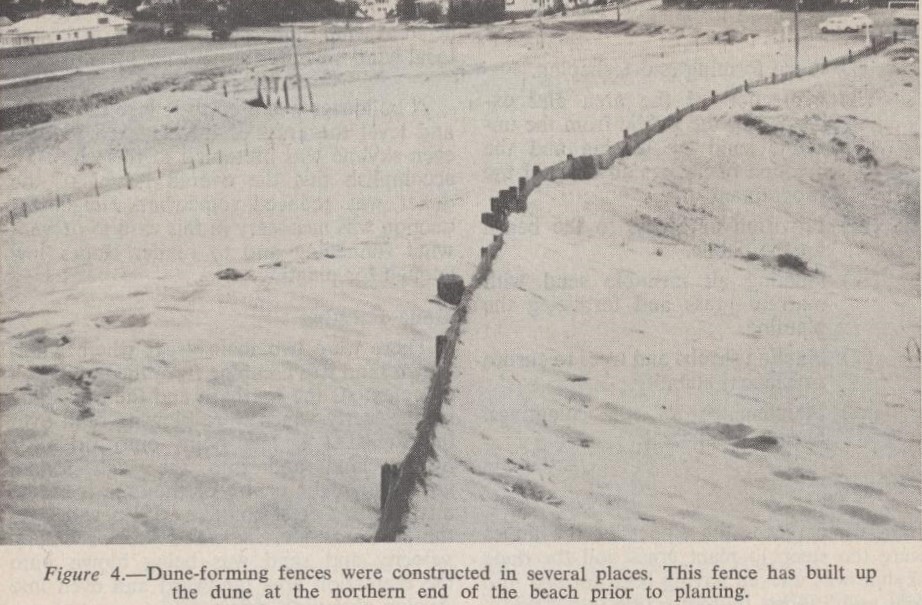
Figure 4.-Dune-forming fences were constructed in several places. This fence has built up the dune at the northern end of the beach prior to planting. At these sites it was necessary to increase the height and width of the existing dune.
Dune forming fences of plastic mesh were erected across these areas (figure 4). Vandals severely damaged fences but regular maintenance enabled the fences eventually to reform the dune to the required configuration.
Fencing
When the reshaping was complete a start was made on fencing the whole area to exclude the public from the area to be planted. The fencing was constructed with steel posts and wooden strainers and hinged joint fencing with supporting 10-gauge wires.
The whole dunal area was fenced from the Avalon Surf Lifesaving Clubhouse in the south to the small car park and land, privately owned until recently, in the north. On the seaward side the fence ran from approximately 30 m to 60 m landward of the mean high water line.
Beach Access
Incorporated in the fencing programme were fenced laneways which provided access to the beach. These were located over the dune in two places, at the clubhouse and direct from the northern car park area.
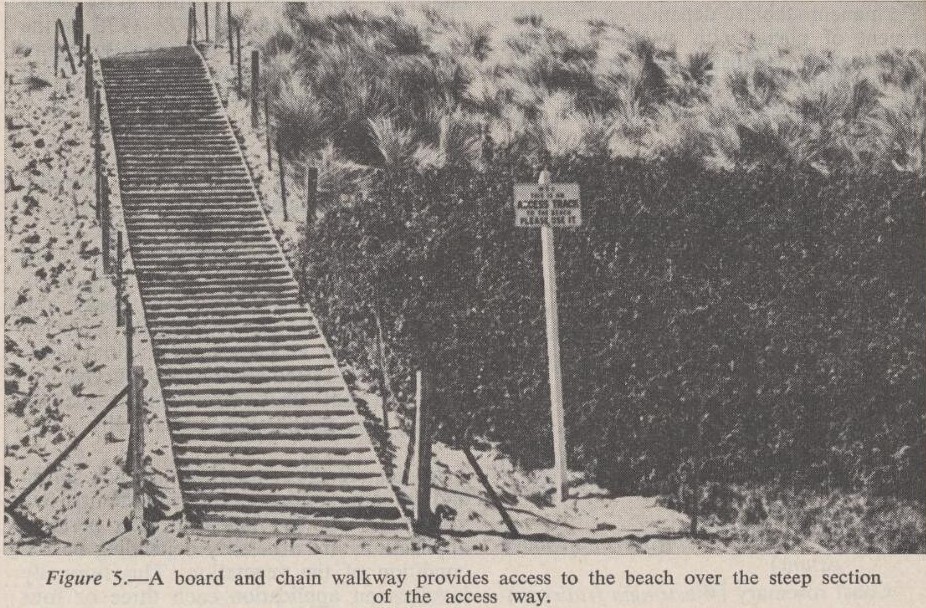
Figure 5.—A board and chain walkway provides access to the beach over the steep section of the access way.
The steep sections of the laneways were board and chain walkways as described by Barr and Watt (1969) (figure 5).
The remainder of the laneways were sealed with gravel.
In conjunction with fencing and provision of access to the beach, notice boards, requesting public co-operation, were erected at strategic points.
Primary Planting
During May and June, 1970, the planting of marram grass (Ammophila arenaria) commenced. The grass plants were collected from the Soil Conservation Service experimental area at The Entrance North.
Culms of marram grass were planted on an approximate 50 cm grid pattern and fertilized by hand with approximately 380 kg/ha of an N:P:K: fertilizer, 10:9:8. The newly planted grass was protected with a layer of brush (figure 6).
The brush matting prevented sand around the new plants from blowing out and trapped sand blowing across the area from the beach.
Very dry conditions in June, 1970, prevented the completion of the planting planned for that year.
A large proportion of this first area planted (adjacent to the Avalon Surf Lifesaving Clubhouse) was within reach of a watering point and was watered when possible. Consequently, results from this initial planting were excellent in spite of the very dry winter conditions prevailing in 1970.
Marram grass is a winter growing perennial and further planting could not be undertaken until April, 1971.
The winter of 1971 was again very dry. By early July, 1971, approximately 80 percent of the total area had been planted with marram grass when unfavourable weather conditions again stopped planting. Because of the dry conditions approximately 5 per cent of the 1971 plantings failed.
The marram grass planted in 1970 was topdressed with 10:9:8 fertilizer in April, 1971, and made further excellent growth.
During winter of 1972 all previous plantings of marram grass were topdressed with fertilizer and the remaining areas were planted. Most of the grass culms for this final planting were collected from the 1970 plantings.
In the process of fertilizing the marram grass, existing plants of the native sand spinifex were also fertilized. Sand spinifex responds vigorously to fertilizer and it is a valuable sand stabilizing plant. Its spread through the marram grass has been very satisfactory.
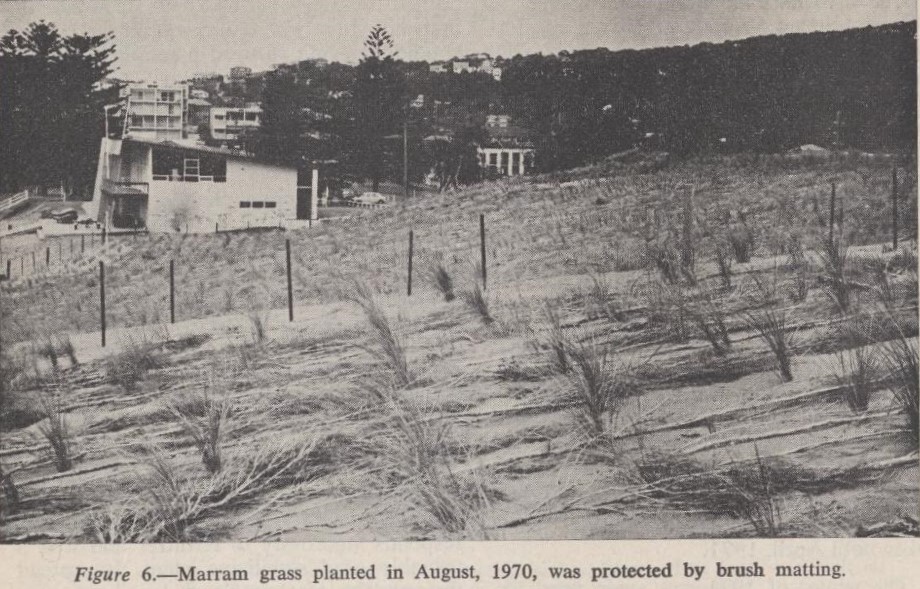
Figure 6. —Marram grass planted in August, 1970, was protected by brush matting.
Secondary Planting
Permanent stability depends on the establishment of plants with a long life span. Marram grass establishes and grows well in loose sand but its life span as a dense sward is limited and can vary from 3 to 15 years depending upon the site.
Once the sand surface is stable and some wind protection at ground level has been provided shrubs and trees suited to the local environment can be established.
In spring, 1972 and autumn, 1973 a range of suitable trees and shrubs were planted on the landward side of the dune. The planting included the following species :
Coastal wattle ( Acacia sophorae )
Cyprus wattle ( Acacia cyanophylla )
Banksia or coastal honeysuckle (Banksia integrifolia )
Coastal tea-tree ( Leptospermum laevigatum)
Coast rosemary ( Westringici fruticosa).
In addition sand spinifex is spreading naturally. Seedheads of this grass were planted in the summer of 1972-1973 on the lower seaward slopes of the dunes to ensure its spread into this important area.
Maintenance
Once stability is achieved it is essential that it be maintained. Vegetation has been introduced into a very infertile medium (sand) under very harsh conditions (severe winds, salt spray and possible vandalism). It can be expected therefore, that at least in the initial years vegetation will need assistance to survive and grow and that other improvements such as fencing may need repair periodically.
Regular fertilizer application, each spring and autumn, is necessary during the first few years after planting and thereafter periodic applications are necessary depending on the condition of the vegetation. This normally involves an application each three or four years of a fertilizer similar to N:P:K—--10:9:8 at the rate of approximately 200 kg per ha.
Occasional damage from storms, vandalism or fire may cause blowouts over small areas. An area damaged in this way will need to be replanted quickly, fertilized and protected with brush mulch to prevent the area extending.
Beach access tracks need to be examined periodically to ensure that they have not become unduly depressed over the crest of the dune. Should this occur the track can become a source for a blowout. In this event the track can be either replanted and relocated or replenished with sand and the board and chain walkway raised.
Beautification
When the area is fully stable specific planting projects can be undertaken on protected parts of the dune. The landward slope of the dune and the protected recreation and parking area can be planted to exotic shade trees or native plants unable to tolerate windblown sand or inundation by sand.
The stabilized dune allows development, to suit the area and the needs of the community, to proceed without the hazard of windblown sand, sand inundation and excessive salt-laden wind.
CONCLUSION
It has been demonstrated at Avalon that the ravages caused by man on our beaches can be healed and corrected but that to successfully do so requires control of public use of the area.
It is also apparent that the correction of this type of erosion depends upon co-operation between local residents, beach users, the controlling local government authority and the Soil Conservation Service. Without this willingness to co-operate the benefits are likely to be short term.
ACKNOWLEDGMENTS
The initial planning of this project was carried out by Mr D. A. Barr, formerly Research Officer with the Soil Conservation Service of New South Wales.
The Avalon Preservation Trust undertook public relations activities and actively supported Warringah Shire Council in the programme.
The helpful approach of the staff of Warringah Shire Council Parks and Reserves section facilitated the work.
Reference
Barr, D. A. and Watt, B. G. (1969) —Pedestrian access to beaches. J. Soil. Cons. N.S.W. 25 (286-294). The Journal of the SOIL CONSERVATION SERVICE of New South Wales. APRIL, 1974, Volume 30, Number 2.
THE JOURNAL OF THE SOIL CONSERVATION SERVICE OF NEW SOUTH WALES Volume 30 Number 2 April , 1974
Issued under the authority of The Hon. G. F. Freudenstein, M.L.A. Minister for Conservation New South Wales. Published quarterly by the Soil Conservation Service, Box R2Ol Royal Exchange Post Office, Sydney, N.S.W. 2000. Edited by J. C. NEWMAN, B.Sc.Agr., Special Soil Conservationist. D. West, Government Printer, New South Wales—1974 G 45725—1
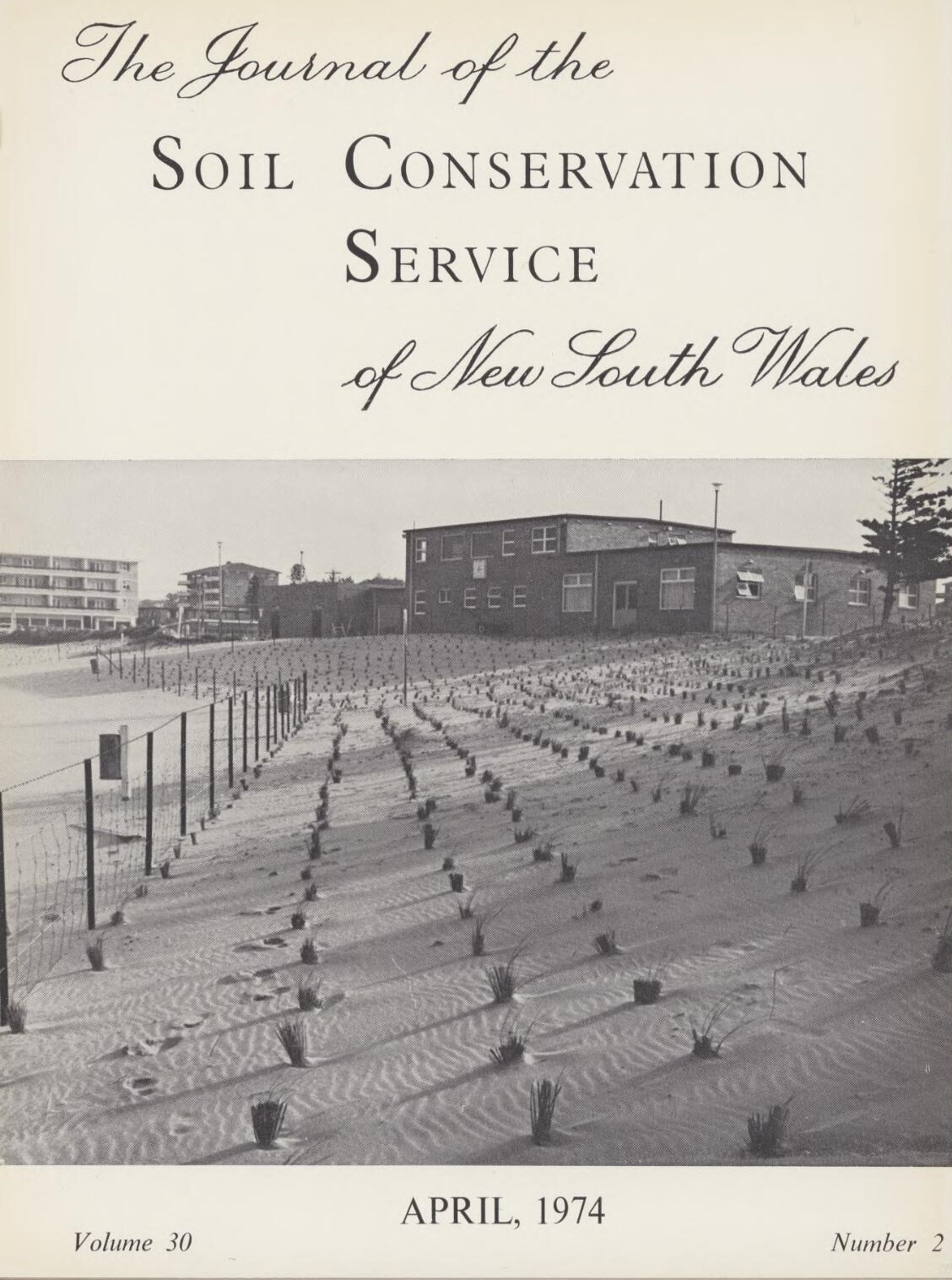
COVER: Part of a sand-drift area at Mona Vale which is being stabilized with marram grass by Warringah Shire Council. The Soil Conservation Service prepared plans and specifications to assist Council in the overall project.
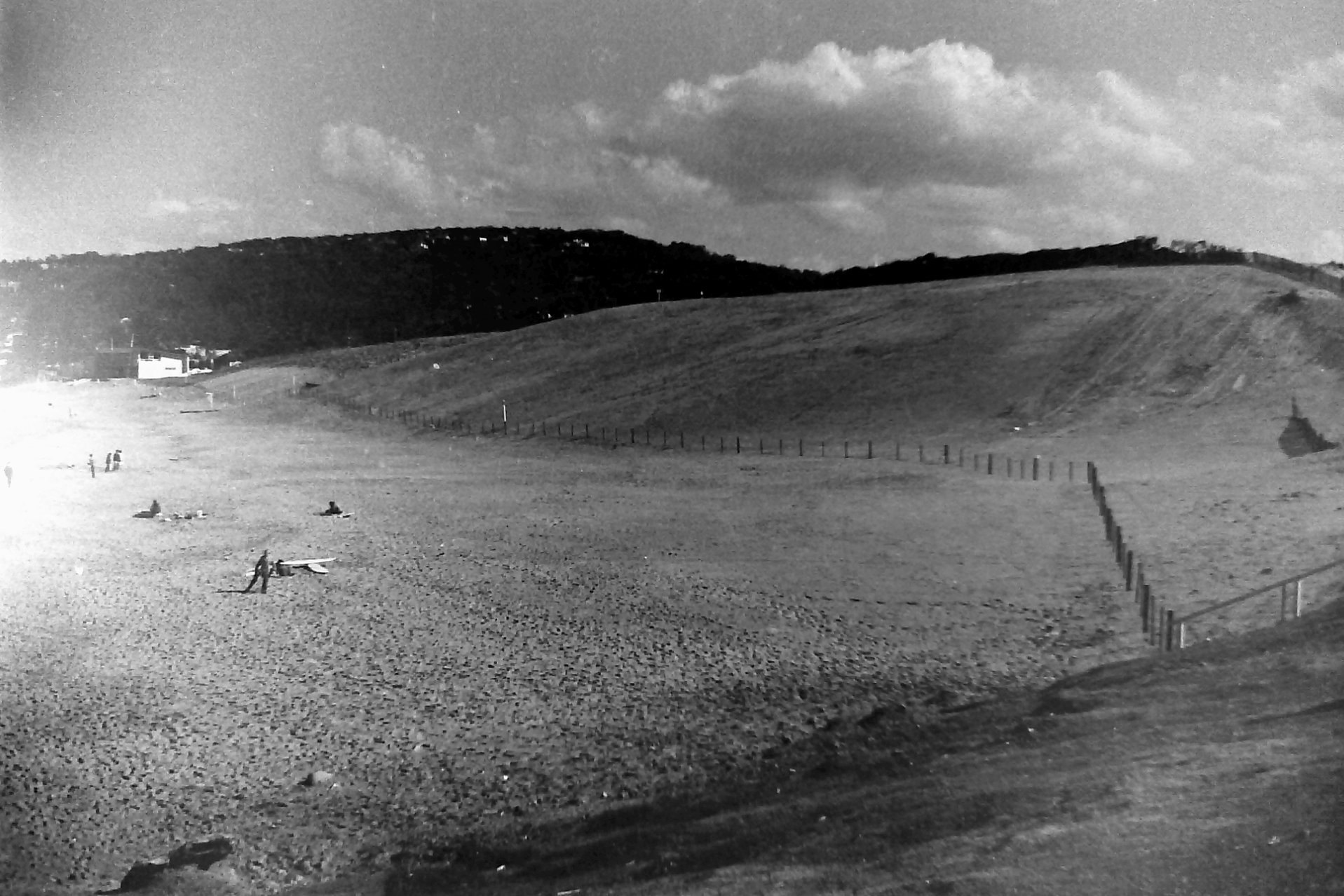
Avalon sandhills pre re-vegetation, 1970. Photo: Gary Clist
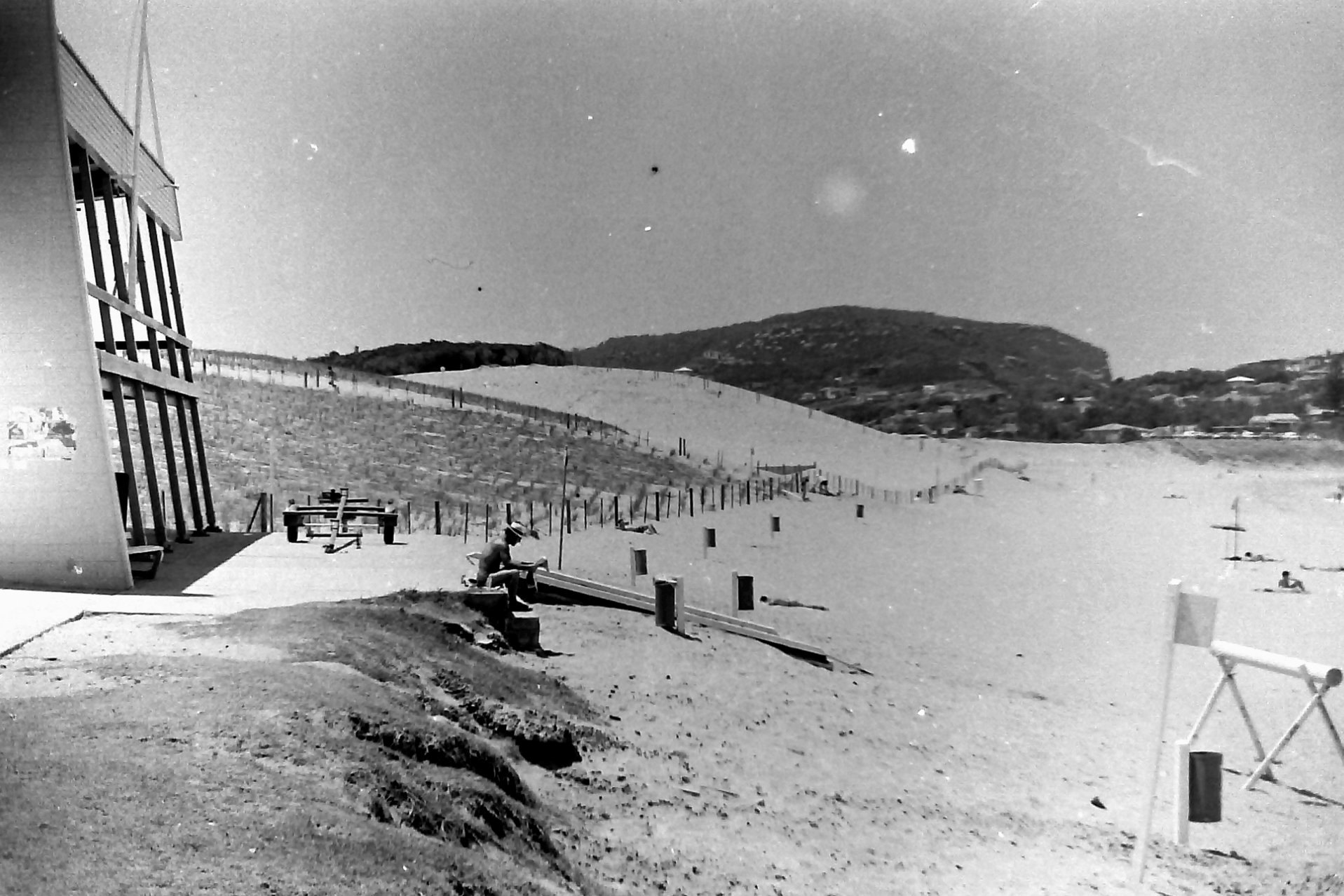
Avalon Sand Dunes - marram grass planted out, 1970. Photo: Gary Clist
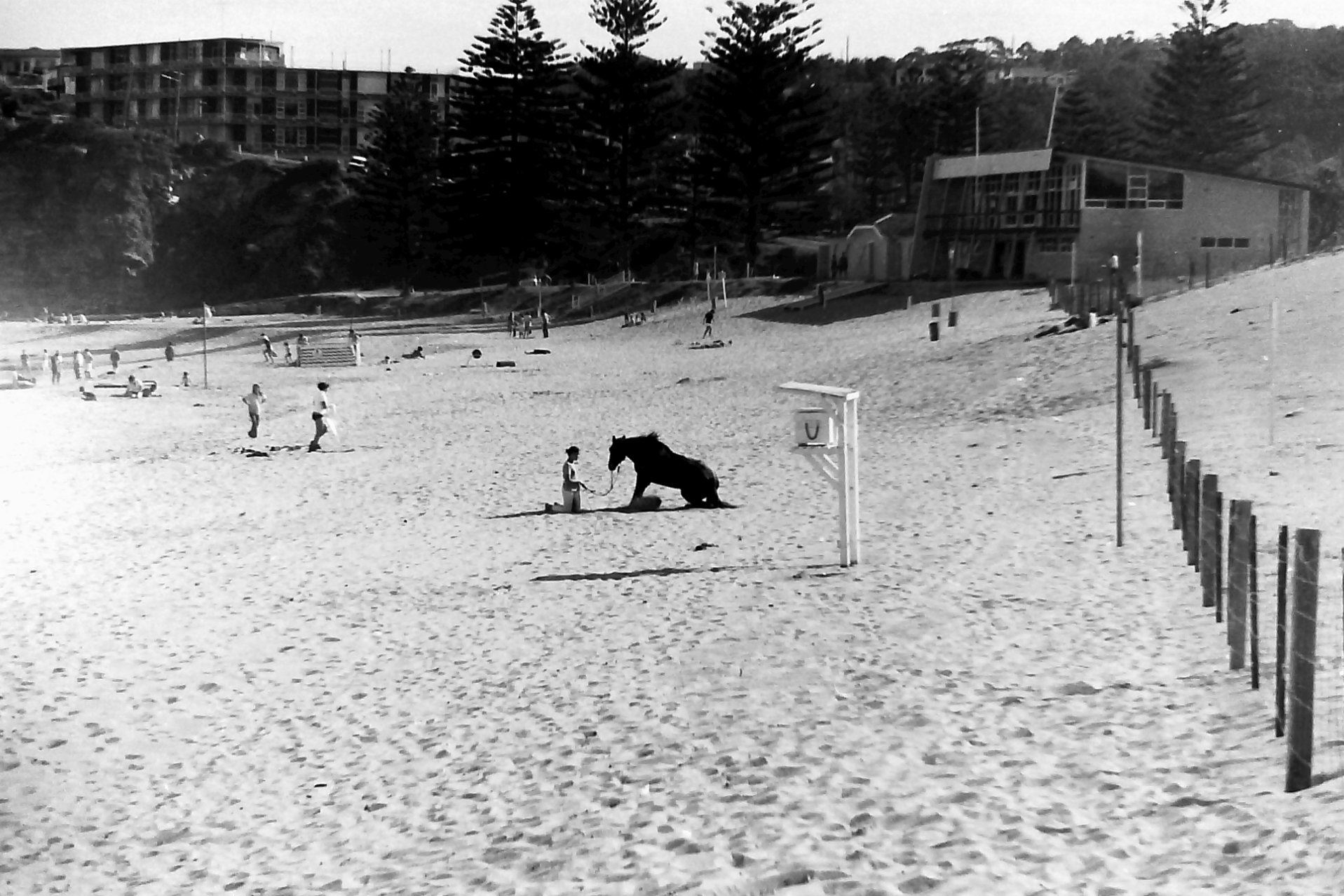
1970 - Horse on Avalon Beach, south end. Photo: Gary Clist
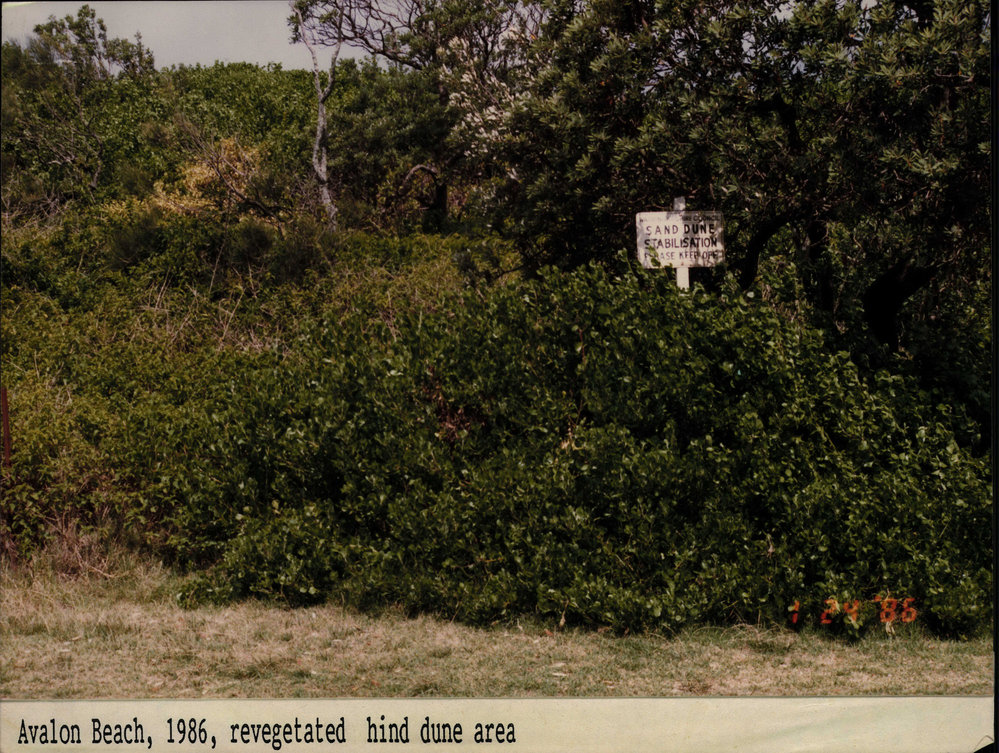
Avalon Beach, revegetated hind dune area, January 24th, 1986. Photo: Digital Image 400 - courtesy NSW DPI
In 1989 volunteer works commenced under the Friends of Avalon Dunes Dune-Care Group to remove Bitou - this now covered 80% of the dunes. In a 2013 interview with Marita Macrae, who had just received the Ruth Readford Award for Lifetime Achievement*, Marita shared an insight into the beginnings of this group.
The restoration and maintenance of the Avalon sand dunes has been a long term and quite big project – how did that start?
It had various beginnings. I was always interested in gardening and when I had the opportunity to do Horticulture in the late 1980s, part of this was a Bush Regeneration course. While doing this I learnt about Bitou bush. Also, Warringah Council as it was at this time, around 1989, started on the dunes as they were about 80% Bitou.
The dunes are divided into paddocks, and you can see tracks between these. Warringah Council started in the one nearest to the surf club. They had a grant and got a tractor in there and pulled out lots and lots of Bitou. They then planted some natives – Coastal teatree, some Beach Spinifex and Coastal Banksias and that was it. The idea of those plants was to stabilise the sand after they’d pulled out the Bitou.
Unfortunately Bitou is a terrible seeder, producing thousands and thousands of seedlings. In 1989 I used to watch what was happening. I had a young Labrador, Toby, which I used to take for walks behind dunes and watch the Bitou bush seedlings there. The area to the north was still mostly Bitou. You can’t just start a job like that and walk away from it or the project would be a waste of money.
At the beginning of 1990 there two people, myself and a man who left Avalon a couple of years later, approached the Council and suggested we form a volunteer group to maintain what had been started and to continue it. That’s how it really began.
What was the name of this volunteer group?
We called it Friends of Avalon Dunes Dune-Care Group, which was a bit of a mouthful. But in those days, the early 1990’s, it was part of a lot of work to control Bitou right along the NSW coastline, mainly on dunes, and also in the forests behind dunes. There were lots and lots of groups working at this – mainly north up the coast but also as far down as Tathra on the south coast There were lots of very good volunteer groups working along the coast and we just became one of those.
Ruth Readford I met when we got started in the early 1990s soon after we’d got started. I hadn’t known her before but she lived at this time at Ballina. She was a very good leader and organiser. She initiated telephone link ups and Dune Care conferences. We would meet in small groups and talk about our projects. She has written a book about community dune care at Ballina.
The restoration works which began in 1990 have an ongoing maintenance though – you have just reformed the group?
We were working on the Avalon dunes for about 20 years and during that time we’d had quite a few different grants. The Catchment Management Authority grant in the early 1990’s, a State Government grant, NSW Environment Trust grant and several Coastcare grants. I cannot take credit for receiving those grants. I helped write them but I had a great deal of help from Pittwater Council staff, particularly Paul Hardie. He always worked as a volunteer as well, right from the very start, despite having a young family. Eventually the Council, after our grants projects were completed, took on maintenance and engaged bushcare contractors to work on the dunes.
We thought everything was going well – the fact is that Bitou is a very obvious weed and people like to do big obvious weeds; they’re satisfying to do because you can see what you’ve done when the work is done.
There are a lot of other weeds there though that benefited from the disappearance of the Bitou, Morning Glory in particular.
About a year ago I noticed that the dunes were still looking pretty weedy so I suggested about September 2012 we reform the group. We’ve been working one morning a month ever since.
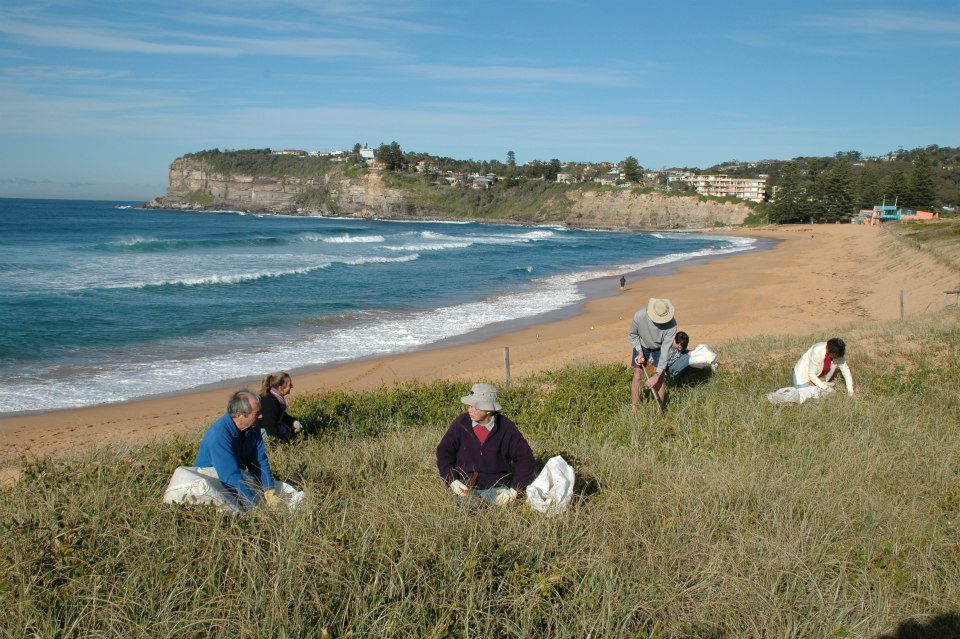
Avalon Dunes - weeding with a view in 2013 - Weeding Spinifex grass - not much else grows in this windy salty place.
When and where does this group meet?
On the first Sunday of each month at 8.30am. We’re only working on a small section at this stage and have been meeting at the back of the dunes near the little bridge over Careel creek. Out major weed that we’ve been tackling is Morning Glory, which we’ve been doing for years. It’s a very time consuming insidious weed.
Although the Council still has contractors working here I think this one is best tackled by volunteers who don’t mind doing the fiddly work that you need to do to try and control it. This is not so easy for contractors that need to be able to show where they’ve been working to their employers. If they have a team of six people working a whole day on Morning Glory, you will not be able to see much difference. I think this is a weed better tackled by us volunteers. Many are happy to do this, others would rather find Asparagus Fern, Turkey Rhubarb or Bitou and tackle that.
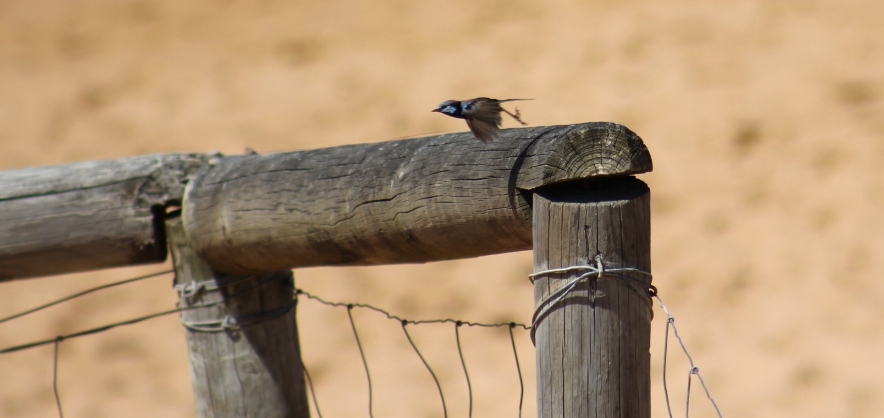
_______________________________
*The Ruth Readford Award for Lifetime Achievement honours an individual who has dedicated significant energies, time and commitment to improving planning and/or management of the NSW coast. The Selection Criteria is described as: Positive impact of actions of individual either through employment or volunteer effort; length of time involved in coastal issues; and recognition by the broader community of individual’s contribution to coastal management.
Avalon Beach April 2nd, 2022. Photos: A J Guesdon.
References - Extras
- Avalon Beach Culture Collective Inc + Avalon Beach Centenary Events
- Pittwater Roads II: Where The Streets Have Your Name - Avalon Beach
- Pittwater Roads II: Where The Streets Have Your Name - Clareville
- Avalon's Village Green: Avalon Park Becomes Dunbar Park - Some History + Toongari Reserve and Catalpa Reserve
- Pittwater Summer Houses: Gunjulla, Avalon Beach-Clareville
- Avalon Beach Surf Life Saving Club - The First Clubhouse
- Avalon Beach Surf Life Saving Club - The Second and Third Clubhouses
- Avalon Beach Golf Links - Pittwater Fields of Dreams II
- Daniel Gordon Soutar's Influence On Local Golf Courses: Some History Notes
- Avalon Camping Ground
- Avalon Beach Reserve Heritage Marker For Old Kiosk Installed
- Angophora Reserve
- Motor Car Tours To And In Pittwater Show Us The Way This Place Once Was
- Avalon Beach Public School: Some History For A 70th Birthday
- Photographers Of Early Pittwater: David 'Rex' Hazlewood + Photographers Of Early Pittwater: David 'Rex' Hazlewood
- Archpriest John Joseph Therry
- John Collins of Avalon - Pittwater Patriarchs Series I
- Maria Louisa Therry - Pittwater Matriarchs Series I
- Careel Bay Steamer Wharf And Boatshed
- The Mulhalls Of Broken Bay And Barrenjoey - Australian Champions
- Light Keepers of Barrenjoey Lightstation
- Captain Francis Hixson
- The Collaroy Paddle Steamer: New Ephemera Added To Public Accessible Records - Her Connections To Pittwater
- Albert Thomas Black
- John Black
- Pittwater Reserves, The Green Ways: Clareville Wharf and Taylor's Point Jetty
- Early Pittwater Paddlers, Oarsmen, Rowers And Scullers: The Green Family
- Early Pittwater Paddlers, Oarsmen, Rowers And Scullers: The Fox Family
- Early Pittwater Paddlers, Oarsmen, Rowers And Scullers: The Paddon Family Of Clareville (Or Clairville)
- Hy-Brasil: Avalon Beach - Pittwater's Summer Houses
- Pittwater's Torpedo Wharf and Range
- The Roads And Tracks Of Yesterday: How The Avalon Beach Subdivisions Changed The Green Valley Tracks
- Roads In Pittwater: The Barrenjoey Road
- Photos Of Avalon Beach And Surrounds From 1968 And 1970 - Taken By Gary Clist
- The Roads And Tracks Of Yesterday: How The Avalon Beach Subdivisions Changed The Green Valley Tracks
- Avalon Preservation Association - Profile
- This is Avalon - Winter Solstice Festival - Sunday 21st of June 2015
- Winter Solstice Festival Warms Avalon’s Heart by Jayne Denshire
- Avalon Art Carnival: THE GAME - November 2015
- Avalon Beach 100th – Centenary Celebrations - Centenary Art Exhibition Opening Night
- A Celebration Of Avalon Beach’s Uniqueness – Past, Present and Future by Jayne Denshire
- Avalon 100 - Avalon Centenary Celebrations Hosts Great Events This March: Avalon Sailing Club's 'Sail Of The Century' + Radio Northern Beaches Launches 'The Avalon Story' Series
- Avalon Beach 100 - Ray Henman's 100 Years Centenary Film Of The Family Of Arthur Jabez Small Talk On Their Grandfather + Extra A J Small Notes
- Avalon Beach Centenary Nature Of Avalon and Our Indigenous Culture Celebration At Avalon Art Gallery and Dunbar Park
- Pittwater's Torpedo Wharf - 2022

